13 Best Geckoboard Alternatives in 2025 [Tested by Us]
Geckoboard is a great business dashboard tool, but it can be limiting for marketing agencies working with dozens of clients and channels.
To help you find the best Geckoboard alternative, I did three things:
- Spoke with our customers who previously used Geckoboard.
- Scoured online reviews and community forums to find the best alternatives.
- Tried and tested the tools.
Full disclosure—one of these tools is ours. But that’s because we genuinely believe Whatagraph can help you overcome the limitations of Geckoboard.
But we’re also not here to bash our competitors. We researched them thoroughly (and even tried them out) so you can really understand what they’re great at and if they’re best for you.
By the end of the article, we hope you’ll find a Geckoboard alternative that fits your needs—whether it’s us or not.

Sep 25 2025●10 min read
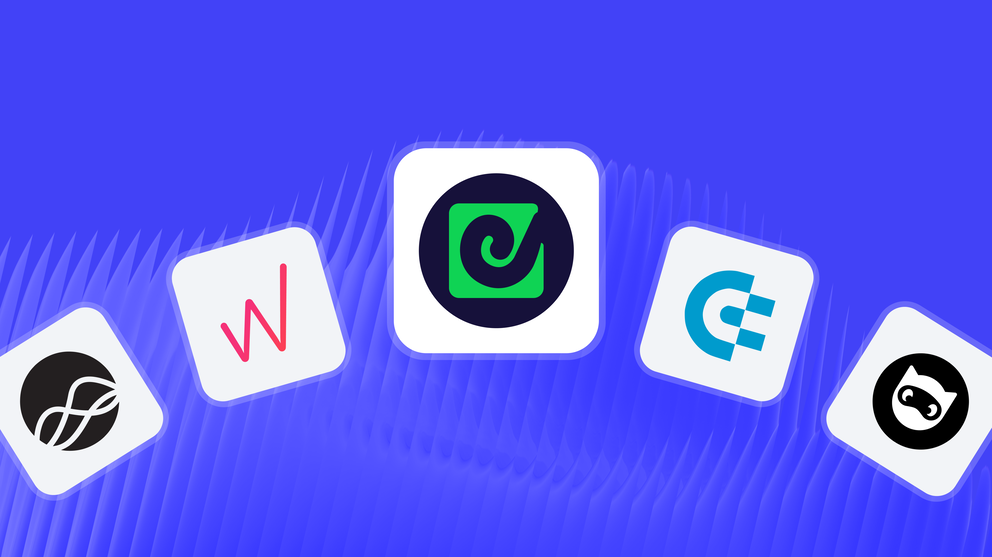
The biggest complaint we hear from ex-Geckoboard users is that it’s limited. Here are a few ways how:
❌ No data blending: Geckoboard doesn’t allow combining data from different datasets or widgets. To compare metrics, you can only place them side by side on your dashboard.
❌ No custom metrics or dimensions: You can’t create custom formulas on Geckoboard, and this makes it difficult to visualize accurate data on reports.
❌ Limited white-labeling: You can only upload your logo and choose a “Dark” or “Light” theme on Geckoboard. Other than this, you can’t use custom domains for reports or remove Geckoboard’s branding throughout the dashboard.
❌ No AI insights: You can't talk with your data as you can in other data and reporting tools platforms. Also, you need to summarize each report manually to unearth actionable insights and next steps.
❌ Visually static: Geckoboard comes with limited customization options for their dashboards. For instance, you can’t drag and drop widgets anywhere you want, resize the columns within the tables, or add your own color schemes to tables and widgets.
❌ No data transfers: Geckoboard is strictly a visualization tool, meaning you can’t transfer data to third-party platforms like BigQuery, Looker Studio, or Google Sheets (if you wanted to).
—
If you’ve outgrown Geckoboard, we’ve got your back.
In this article, we’ll take you through 13 best Geckoboard alternatives that come with advanced data analytics, fully-customizable dashboards, and white-labeling options.
13 Best Geckoboard Alternatives and Competitors in 2025
In a nutshell, here are the 13 best Geckoboard alternatives we’ll review in this article:
- Whatagraph
- Databox
- Klipfolio
- Grow.com
- Tableau
- Looker Studio
- DashThis
- Cyfe
- AgencyAnalytics
- Swydo
- NinjaCat
- Funnel.io
- Supermetrics
Have a set of features you’re looking for in an alternative? Compare them in this table:
| Features |
|

|

|

|

|

|

|

|

|

|

|

|

|
|---|---|---|---|---|---|---|---|---|---|---|---|---|---|
| Ease of use | Easy | Medium | Hard | Medium | Medium | Easy | Easy | Hard | Easy | Easy | Medium | Medium | Hard |
| No. of Out-of-the-box Data Connectors | 55+ | 100+ | 130+ | 75+ | 100+ | 34+ | 25 | 21 | 80+ | 32 | 150+ | 500+ | 150+ |
| Custom API Access |
|
|
|
|
|
|
|
|
|
|
|
|
|
| Data Blending |
|
|
|
|
|
|
|
|
|
|
|
|
|
| Custom Metrics and Dimensions |
|
|
|
|
|
|
|
|
|
|
|
|
|
| Custom Reports and Dashboards |
|
|
|
|
|
|
|
|
|
|
|
|
|
| Campaign Overview and Monitoring |
|
|
|
|
|
|
|
|
|
|
|
|
|
| White-labeling |
|
|
|
|
|
|
|
|
|
|
|
|
|
| Data Update Frequency | Every 30 mins across all integrations and pricing plans | Depends on APIs and your pricing plan, from 1 to 24 hours | Depends on your pricing plan, from 4 hours to 30 minutes | Custom frequency - from 15 mins to 1 hour | Default is every 12 hours but you can set custom frequencies | Once a day or on-demand update | Depends on the data source | Depends on APIs, from 15 mins to 4 hours | Depends on APIs, but SEO rankings update every 24 hours | ? | Every day or manual data refresh | Depends on the data source | Depends on the data source--mostly 1 to 3 days |
| Data Segmentation and Filtering |
|
|
|
|
|
Only for select data sources |
|
|
|
|
|
|
|
| Alerts and Notifications |
|
|
|
|
|
|
|
|
|
|
|
|
|
| Multi-Client Management |
|
|
|
|
? |
|
|
|
|
|
|
|
|
| User Management | Admin, Manager, or Editor roles | Administrator, Editor, User, or Viewer roles | Account Administrator, Klip Viewer, Klip Editor | Admin, Architect, Analyst, Visualizer, Consumer, or View Only roles | Creator, Explorer, or Viewer roles | Every user of the same account are considered "Admins" | Account owner, Admin, Read only | Viewer, Editor, or Owner roles | Staff User or Client User | Admin, Editor, or Contributor roles | System Admin, Standard User, Restricted Partner, Dashboard User, Account Executive, and more |
|
|
| Automated Report Sharing |
|
|
|
|
|
|
|
|
|
|
|
|
|
| Data Export | PDF, XLS, CSV | PDF, JPG | Export dashboards as PDF or image files. Export only individual Klips as CSV | CSV | PNG, PDF, CSV | PDF only | PNG, JPEG, PDF, CSV | Google Sheets, CSV, Excel (only chart level) | PDF, CSV | PDF (only for reports) | Email, PDF | JSON, CSV | Google Sheets, Excel, Monday, PowerBI, SupermetricsAPI |
| AI Insights |
|
|
|
|
|
|
|
|
|
|
|
|
|
| Customer Support | Live chat, email, Help Center for all pricing plans | Live chat, email, Help Center | Email, Help Center | Live chat, Phone, Email, Help Center | Tableau community forum, Help Center, Email, Consulting services (for a fee) | Email, Help Center for all pricing plans | Email, Help center | Help center, community forums | Live chat, Email, Help center | Live chat, Email, Help center | Live chat, Email, Help center, Academy | Email, In-app messages, Help center | Ticket-based support, Help Center |
| Dedicated Customer Success Manager |
|
|
|
|
? |
|
? |
|
|
? |
|
|
|
| Data Security and Compliance | ISO 27001, Enterprise SSO, GDPR compliant, AES-256 encryption, Two-factor authentication, AWS hosted servers | ISO 27001, GDPR complaint, SSL encryption, passwords stored in virtual vault | AWS hosted servers, 2048-bit RSA key access for servers, no passwords, SSL, RBAC | SSL encryption, SHA-encrypted passwords, Two-factor authentication, SOC 2 certified, GDPR compliant, DigiCert SSL, OAuth connections | MFA, SSL/TLS encryption, ISO 27001, ISO 27012, ISO 27018, GDPR and CCPA compliant | Encrypted URLs, Password protection, Restrict IP addresses, GDPR compliant | AWS hosted servers, OAUTH protocols | ? | MFA, Enterprise SSO | ? | GDPR complaint, DDOS protection, data encryption, MFA, RBAC | ISO 27001 certified, GDPR and CCPA compliant, SOC 2 Type II | SOC 2 Type II, GDPR, and CCPA compliant, PCI-DSS, ISO27001, SSL encryption |
|
Pricing
(with $$$ being the highest)
|
$ | $ | $$ | $$ | $$$ | $ | $ | Free for native connectors | $ | $ | $$ | $$ | $$ |
Let’s dive into each of these tools.
1. Whatagraph
Most suitable for: Marketing agencies and in-house teams that need fast, accurate, and stunning reports without technical expertise
If you’re looking for a platform with more customization and data transformation features, Whatagraph is for you.
Whatagraph is the easiest AI-powered marketing intelligence platform that turns complex marketing data into clear insights, instantly.
Marketers use Whatagraph to connect all their channels, centralize reporting, and share impactful results—without needing technical expertise.
In a nutshell, here’s how Whatagraph works:
- Connect to 55+ marketing platforms automatically via native, stable connectors that don’t break.
- Easily organize your data—create custom blends, metrics, and dimensions using no-code workflows or AI.
- Ask AI to create reports by just telling it what you want it to build. Or use drag-and-drop widgets or ready-made templates to build one from scratch.
- Customize reports by just uploading a screenshot of your (or your client’s) brandbook or putting in a prompt. Host and share reports on your own domain.
- Get actionable insights instantly by just asking AI any questions about your connected data. Get it to write performance summaries directly in your reports in four different formats and 18 languages.
- Share reports as live links, PDFs, Excel spreadsheets, or automated emails. Transfer your data to BigQuery data warehouse or Looker Studio.
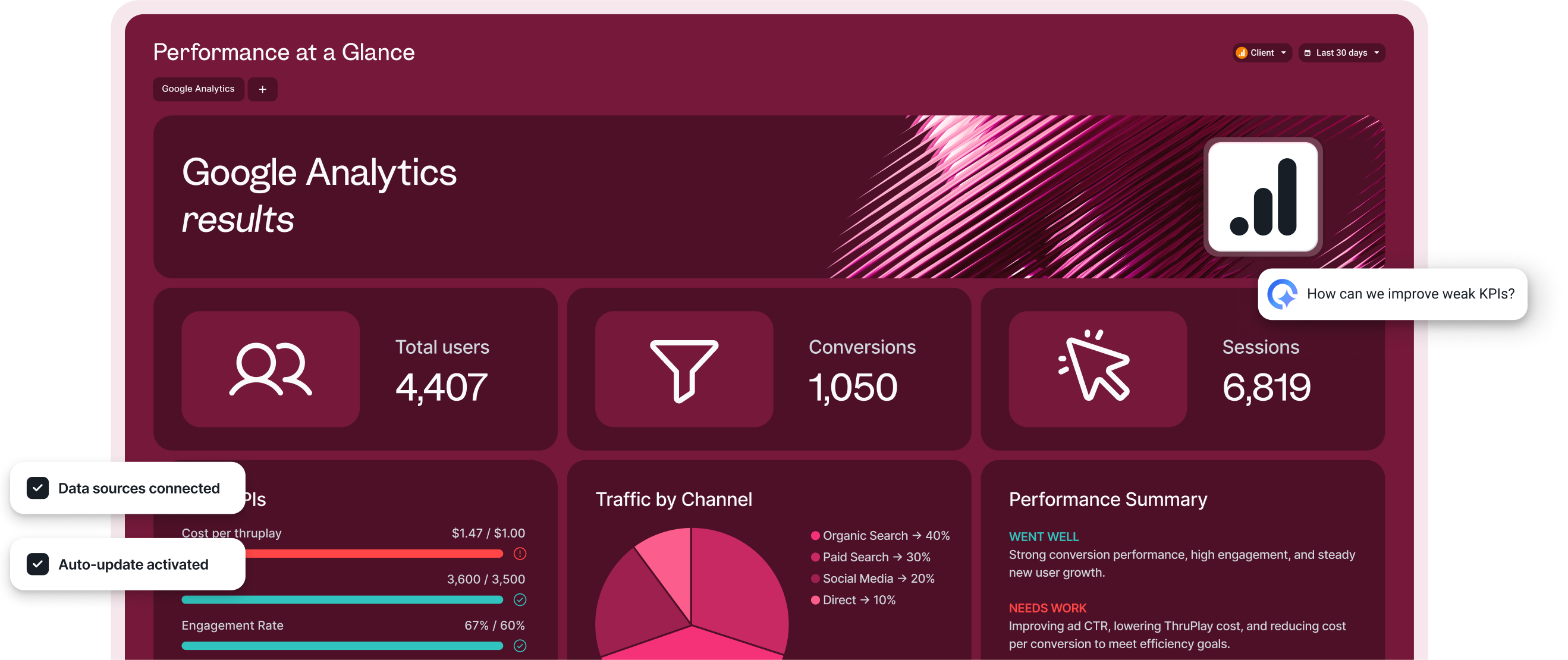
But how does Whatagraph compare against Geckoboard exactly? Let’s take a look:
Geckoboard vs. Whatagraph: Head-to-Head Comparison
In a nutshell, here are six key ways Whatagraph outperforms Geckoboard:
1. Stable, reliable, and all-in-one platform
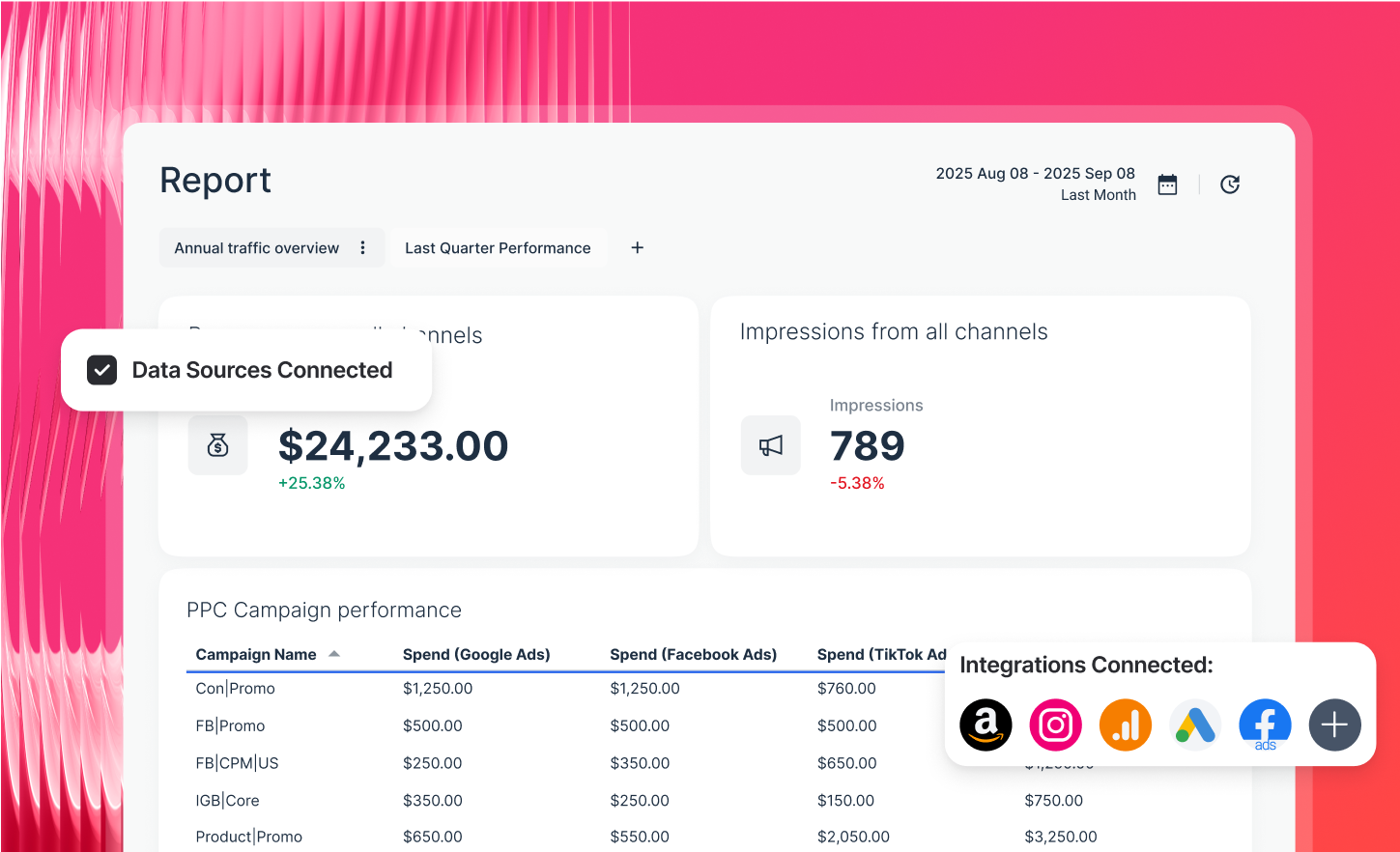
Geckoboard is purely a visualization dashboard tool—apart from connecting and visualizing your data, there’s not much else you can do.
Whatagraph, on the other hand, takes care of your entire data journey. You can not only connect and visualize but also:
- Clean, prep, and organize your data to make sure you’re showing the most accurate data on your reports
- Transfer your data to Looker Studio, BigQuery, or Google Sheets
- Export the data from your reports as Excel or CSV files
And we built Whatagraph to be extremely reliable, accurate, and stable for our users. Here’s how we achieve this goal:
✅ All our data integrations are built in-house, which means they’re seamless, stable, and reliable. Our Product Team regularly maintains them, so you don’t have to. And if there are bugs, we can resolve them fast without having to get a third-party company involved.
✅ According to internal data from the past 6 months, Whatagraph has an average uptime of 99.95%. This means system outages are very (very) rare.
✅ You can work with 10 sources and 100 widgets at the same time on Whatagraph without slowing down the platform.
✅ Your data refreshes every 30 minutes across all your sources, reports, and blends, meaning there are no inconsistent data on reports.
On Geckoboard, the refresh rate depends on the data source and it can be anywhere between 1 to 60 minutes.
Our users love how seamless and stable connections are on Whatagraph. Here’s what Tanja Keglić, Performance Marketing Manager at Achtzehn Grad, says:
We don’t have any connection issues on Whatagraph at all. We just connected the platforms once, and that was it. Whatagraph is also very quick when loading the data.
2. Powerful (but easy) data transformation
If you’re working with 100s of channels and campaigns, you need to organize metrics and dimensions before you visualize the data so your reports will be neat, tidy, and easy to read.
Plus, platforms like Google and Meta are notorious for inflating their conversion metrics.
In this case, you should be able to create custom formulas where you can actually show the actual numbers of conversions and other metrics.
Unfortunately, Geckoboard does not support aggregating data from different datasets/widgets (yet). The only way you can compare data from different channels is to add individual metrics side by side to your dashboard.
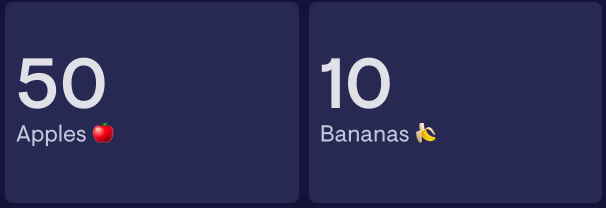
In Whatagraph, however, we have an entire dedicated space for data organization, aptly called “Organize” where you can:
- Blend metrics and dimensions from different channels into unified metrics
- Create custom formulas
- Unify names
- Group data sources and metrics by campaigns or regions
- Save new metrics and formulas as templates to re-use the next time
For instance, say you want to show the ‘Total Ad Spend” across multiple PPC channels. All you need to do is create a custom metric like so:
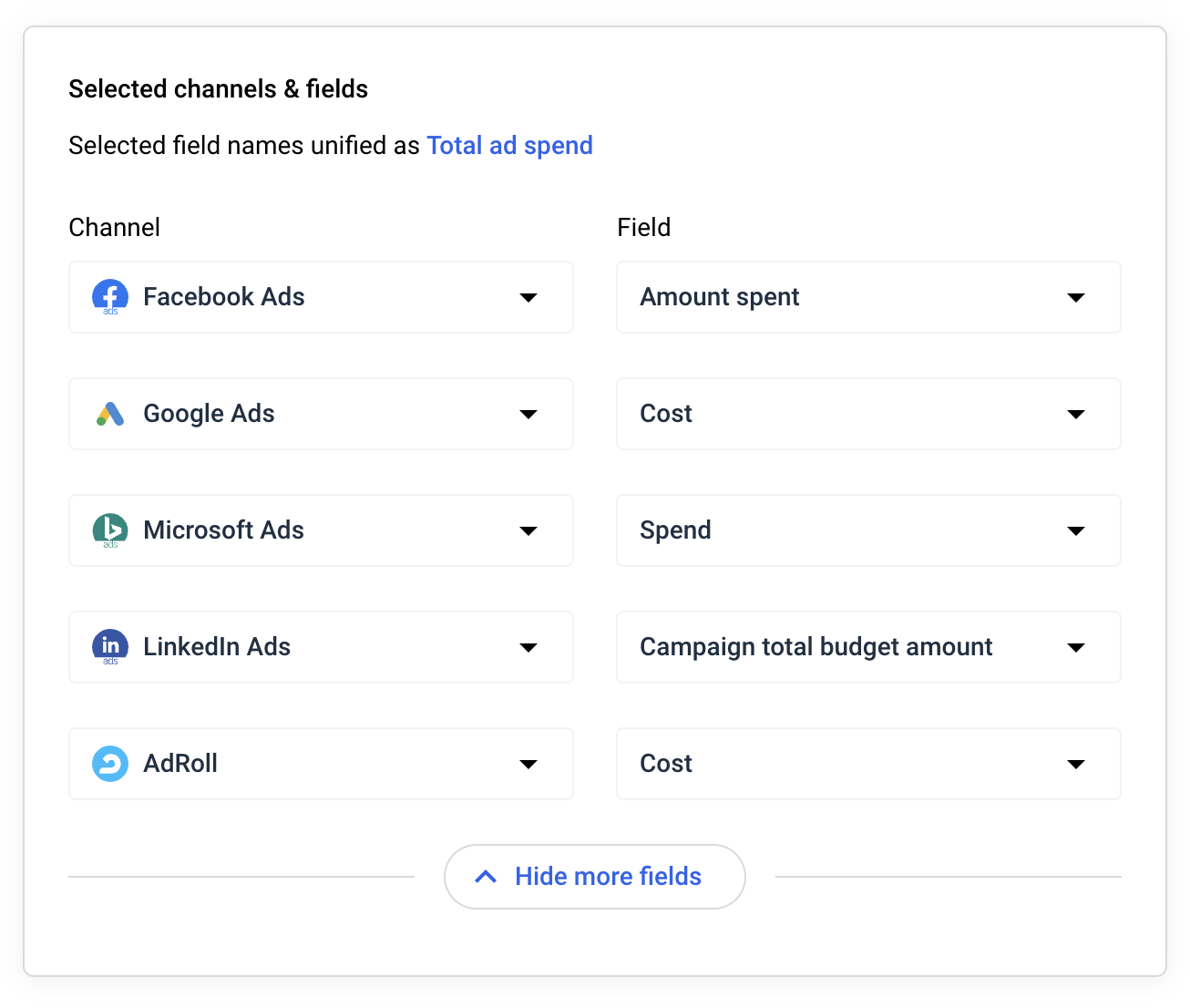
Then, you’ll get an aggregated metric of “Total Ad Spend” to add to your reports.
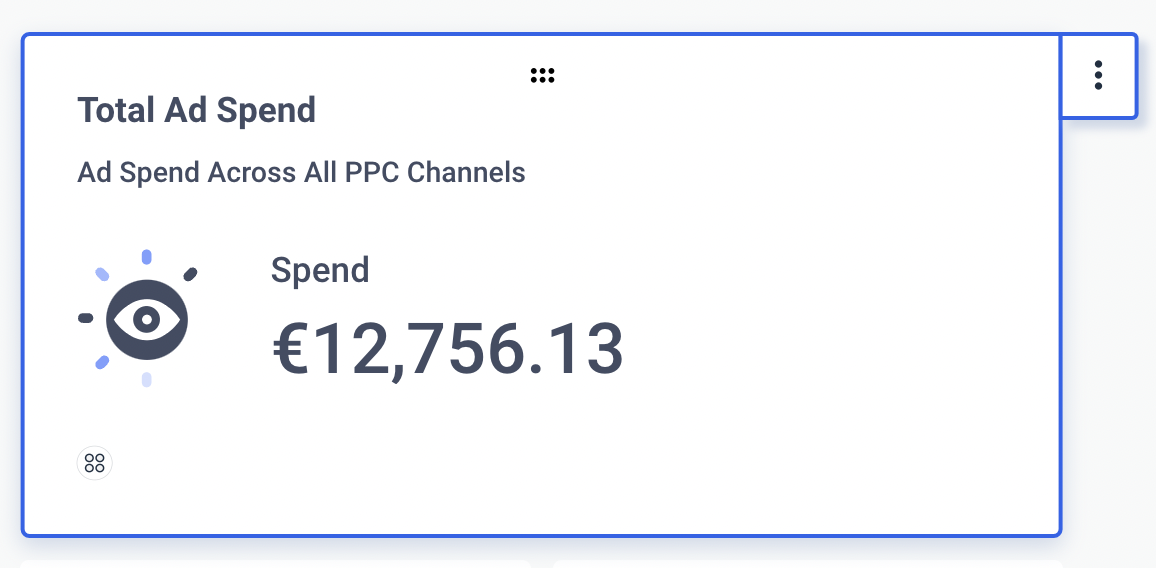
You can also combine data from completely different sources and channels. Say you want to blend data from Facebook Ads and Google Analytics 4. All you need to do is:
- Choose the data sources.
- Choose the dimensions and metrics you wish to use inside the blend.
- Select a join type.
- Give it a name and description.
And you can use the new blended source inside your reports right away.
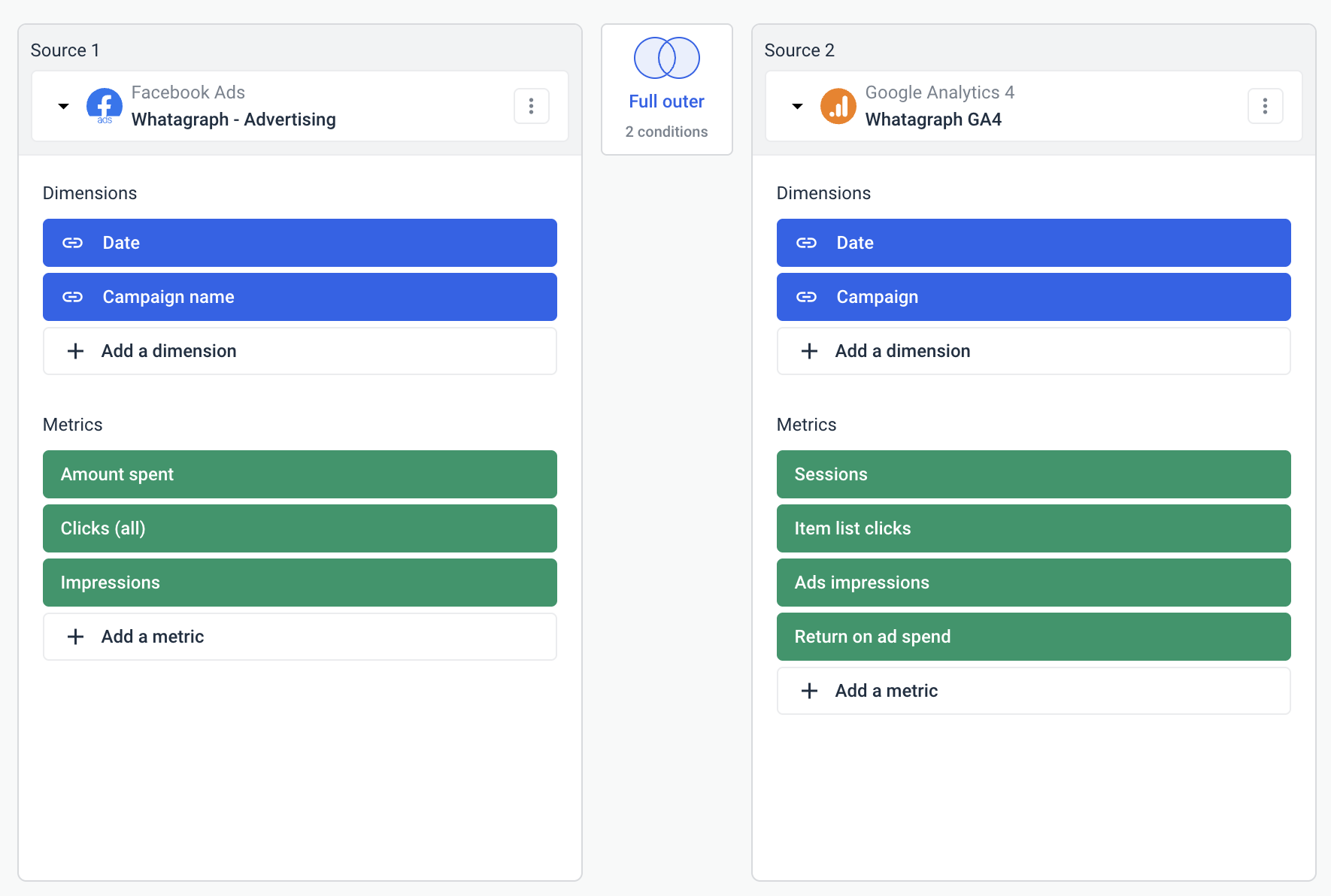
But with Whatagraph IQ Dimensions (available on more advanced plans), you don’t even have to do all this manually. You can just ask AI to:
- Create custom blends automatically. Just describe what you need—like “combine all spend from Meta, TikTok, and Google Ads into one unified Paid Media metric”—and IQ builds the blend for you.
- Build custom metrics on the fly. Want ROAS across channels? Or a funnel KPI like Add-to-Cart conversions? IQ can generate them instantly, without formulas or coding.
- Standardize messy data with IQ Dimensions. For example, if you’ve got campaign names like “FB_US_SpringSale_23” and “MetaUSA_Spring23,” you can tell IQ: “Group by Campaign Type: Spring Sale”. IQ creates a brand-new dimension that neatly categorizes everything, and you can reuse it across reports.
- Normalize any dimension at scale. Group campaigns by objective, products by category, or reviews by language—whatever fits your reporting needs. IQ makes sense of inconsistent data and saves hours of manual clean-up.

Plus, with Performance Monitoring, it's even faster and easier to get actionable insights from your scattered data. You can:
- Group 100s of scattered data sources from the same category into unified Source Groups in seconds
- Add custom tags to your data and filter it by client, business type, location, Account Manager, or more
- Monitor your key metrics from all campaigns and clients in one space
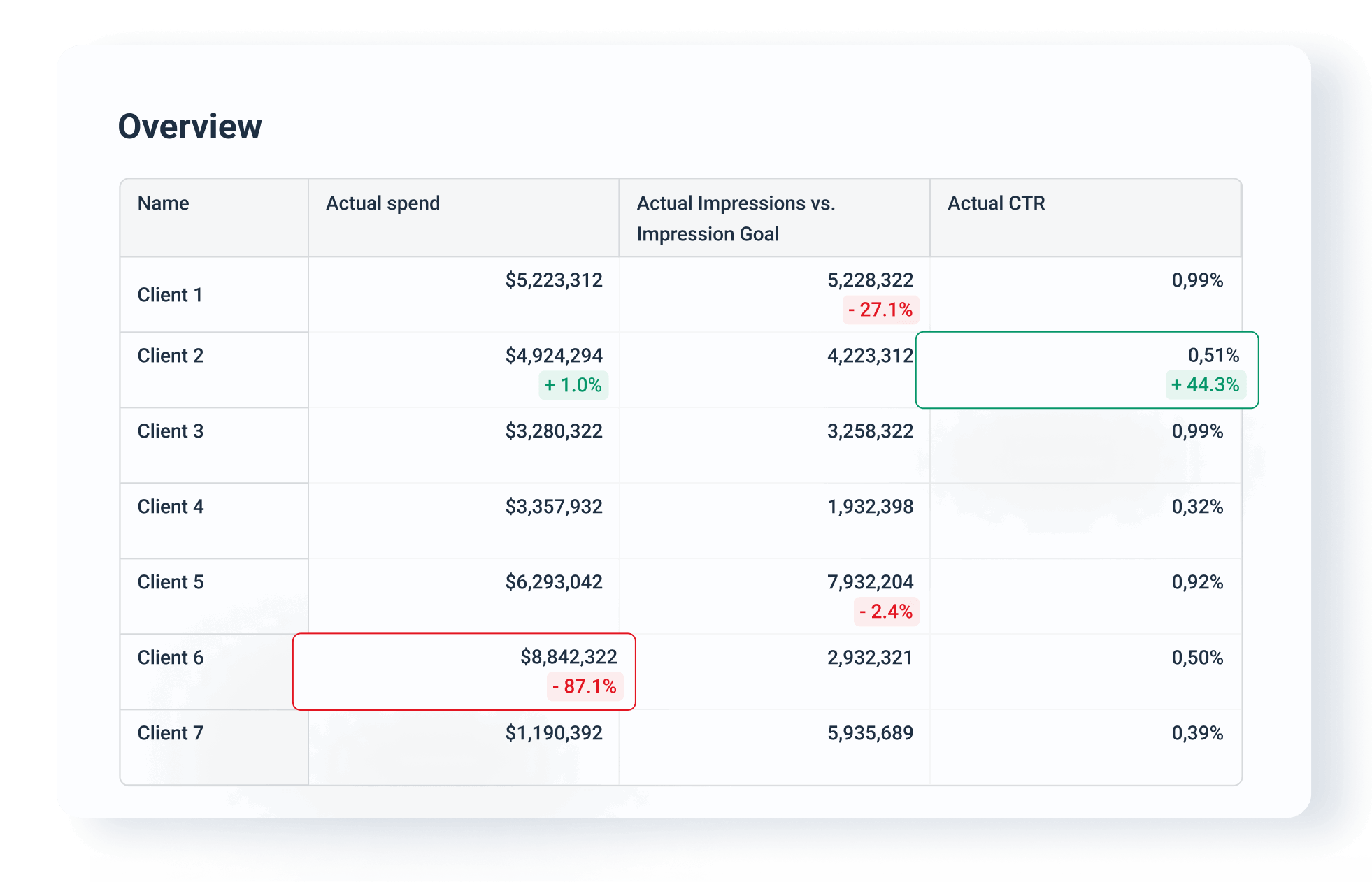 Powerful and easy data organization on Whatagraph means:
Powerful and easy data organization on Whatagraph means:
✅ Your reports are easier to read, neat, and tidy.
✅ Your clients see accurate metrics rather than over or under-reported ones.
✅ You can analyze and compare performance any way you want, and use these insights to deliver better results for clients.
3. Highly customizable and easy to build dashboards
Once you’ve organized your data, it’s time to visualize it.
In Geckoboard, you can’t drag-and-drop widgets onto your dashboard. Instead, you’ll need to:
- Click on “Add widget”
- Connect to your data source
- Choose the metric you want to visualize
- Customize that widget
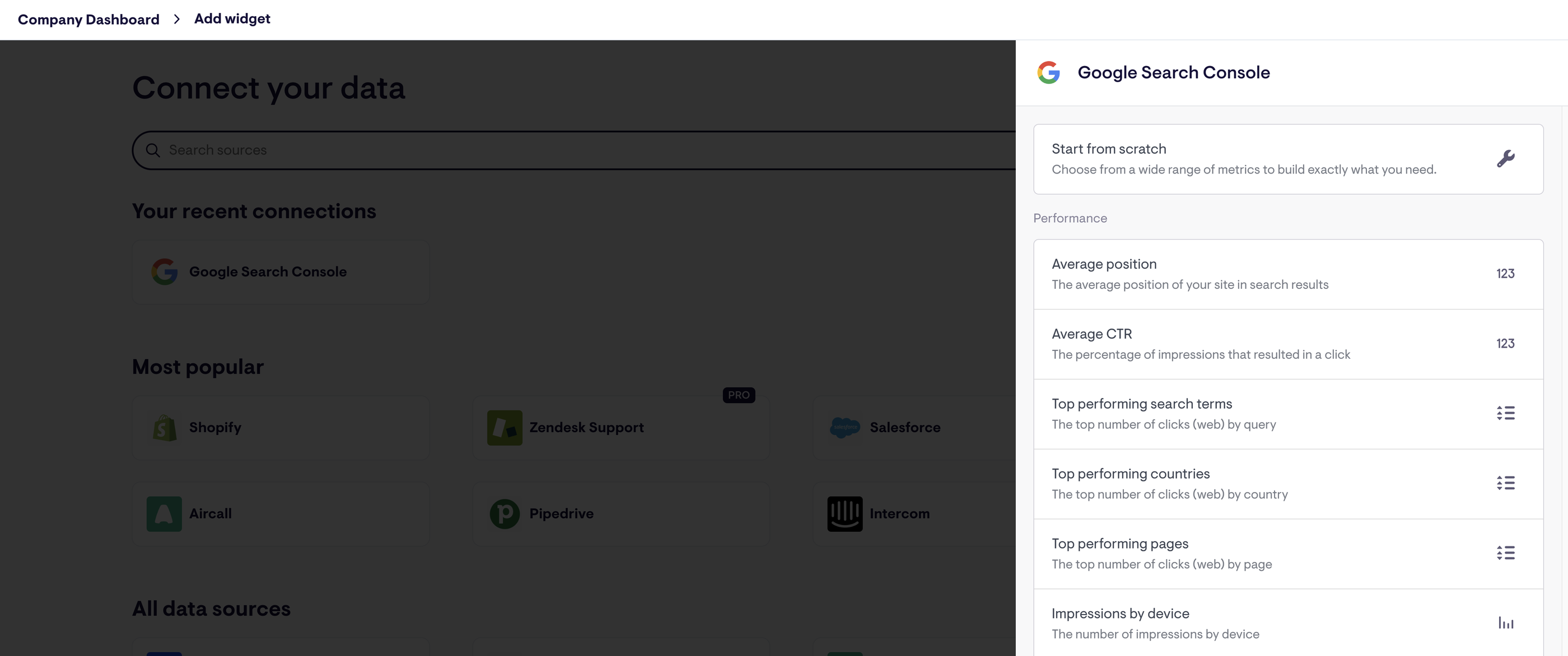
And this is just for one widget. For every new widget you want to add to your dashboard, you’ll need to repeat this process. This creates unnecessary back and forth between the dashboard and the widget builder, and can be time-consuming.
Geckoboard also doesn’t offer any AI features to speed things up.
In Whatagraph, building your dashboard is as easy as 1-2-3 (and actually fun).
Thanks to Whatagraph IQ, you no longer have to manually drag widgets, tweak filters, or fight clunky layouts:
- IQ Report Creation – Just type what you need (“Build me a GA4 performance dashboard” or “Show ROAS by channel”) and Whatagraph instantly generates a full report. Need a specific chart? Ask, and IQ builds the exact visualization for you.

- IQ Summary – Get plain-language insights automatically written for you, instead of manually interpreting every metric.
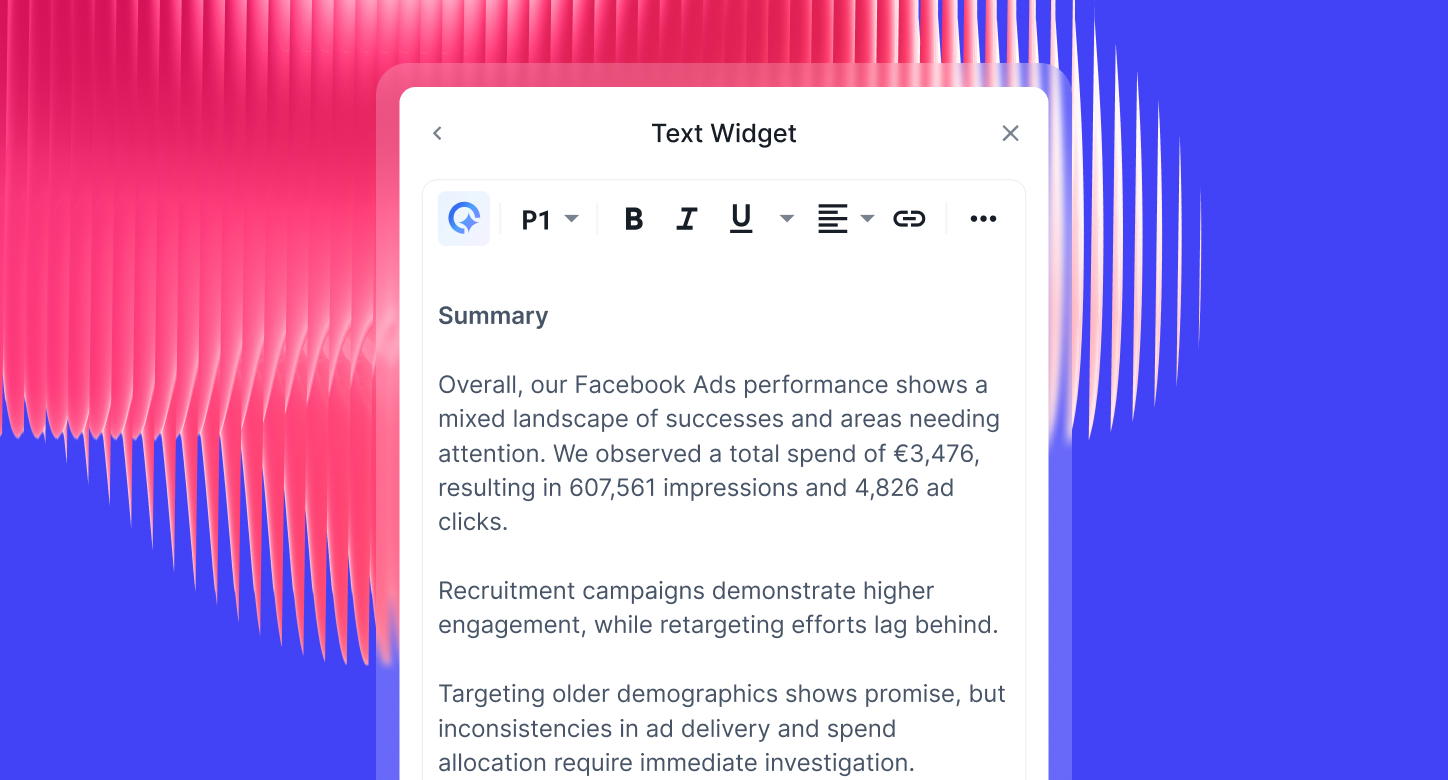
- IQ Chat – Ask questions about your data in plain language and get instant answers right inside your report.
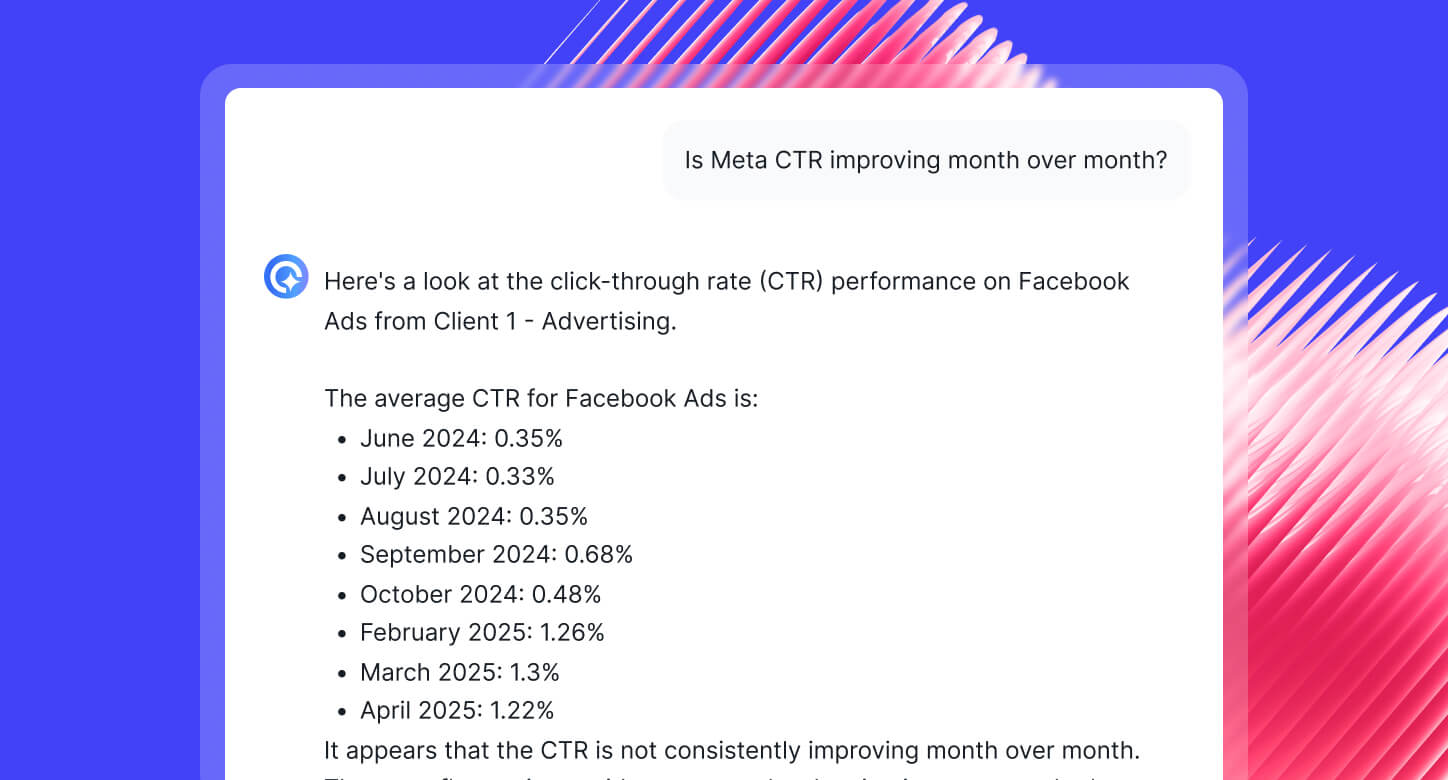
- IQ Themes – Brand your reports in seconds. Upload a logo or image and IQ generates a matching theme, complete with fonts and HEX codes.

Get started with Whatagraph for free.
Thanks to these AI features, agencies like Maatwerk Online are saving 100 hours per month on reporting. Lars Maat, Co-founder, says:
Whatagraph’s AI saves time and energy for our marketing specialists. And the hours we’re saving is just pure profit. We now have the time to focus on more strategic things that help both our agency and our clients grow.
Another feature that Geckoboard users love about Whatagraph is our folder management. You can create folders for each client, Account Manager, or campaign, and organize all the relevant reports underneath each.
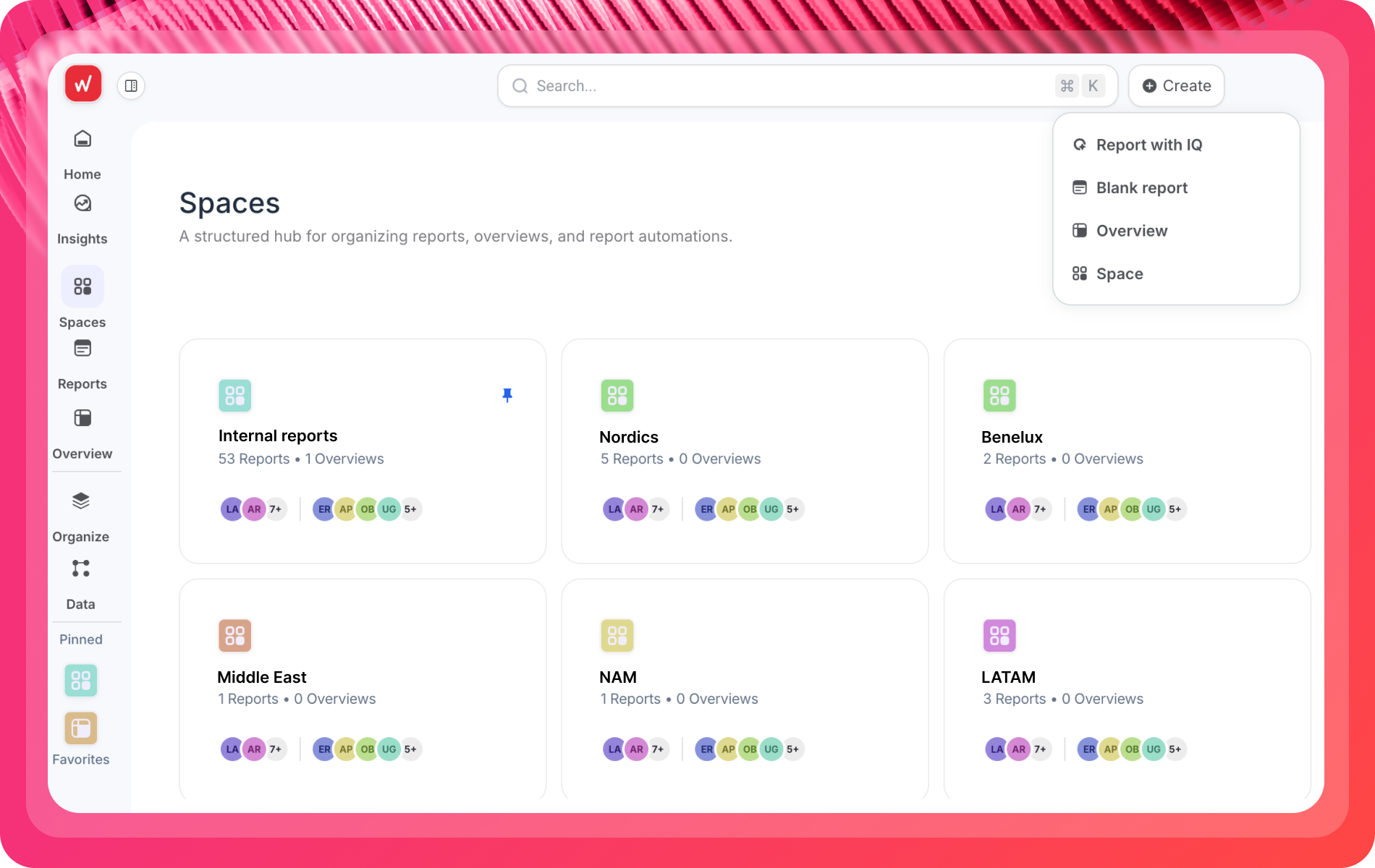 Whatagraph also comes with thoughtful design features that make your user experience smooth as butter. You can:
Whatagraph also comes with thoughtful design features that make your user experience smooth as butter. You can:
✅ Link reports together and edit in bulk (instead of one by one)
✅ Add different “tabs” to one report to show performance for each channel or campaign
✅ Insert or delete rows anywhere on your report
✅ Change your report orientation as Portrait or Landscape
Our customers love how simple and easy Whatagraph is to use. André Cardoso, Project and Performance Marketing Manager at Wise Pirates, says:
Whatagraph is really simple to use, intuitive, and perfect for marketing teams with limited technical knowledge.
4. Stunning white-labeled reports in seconds
When it comes to white-labeling your reports, in Geckoboard, you can only upload your logo and customize your color scheme (only available on the Pro plan).
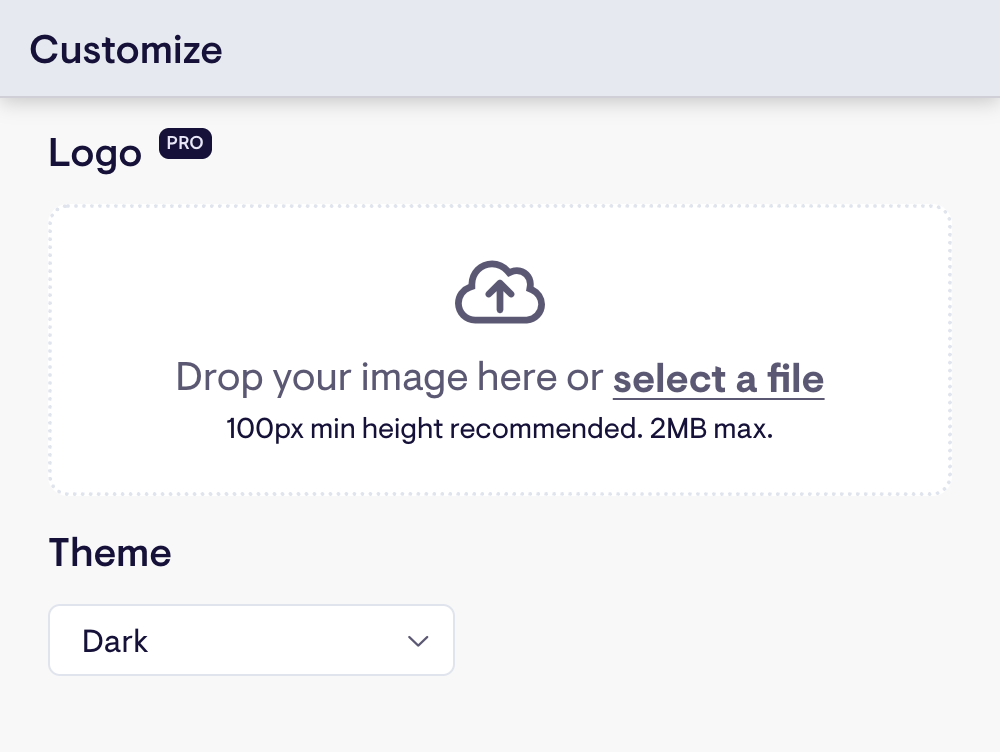
Whatagraph goes far beyond that with IQ Theme that lets you create entire branded themes in second with AI.
Here’s how that works:
- Upload a logo or brand image, and Whatagraph builds a matching palette with fonts, HEX codes, and chart colors
- Or describe the style you want in plain language, and Whatagraph produces a ready-to-use theme
- Fine-tune the colors and fonts manually
- Save each theme as a “Global theme” so you (and your team) can re-use it across all reports
This means you deliver reports that look professionally designed, tailored to each client or brand, and consistent across campaigns.
Here’s an example of a Shopify report template:

Here’s an example of a social media report template:
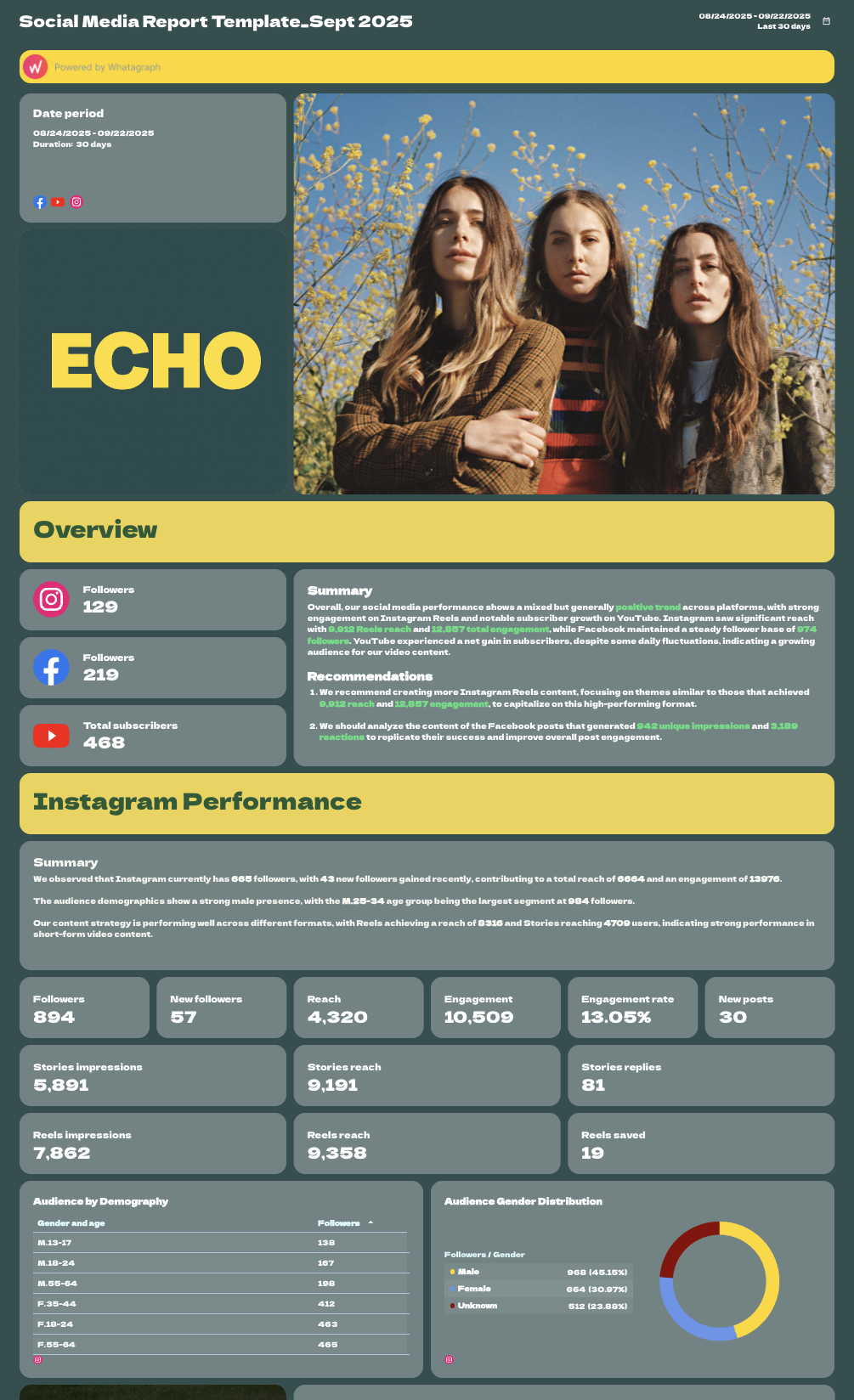
And here’s an example of a paid-per-click report template:
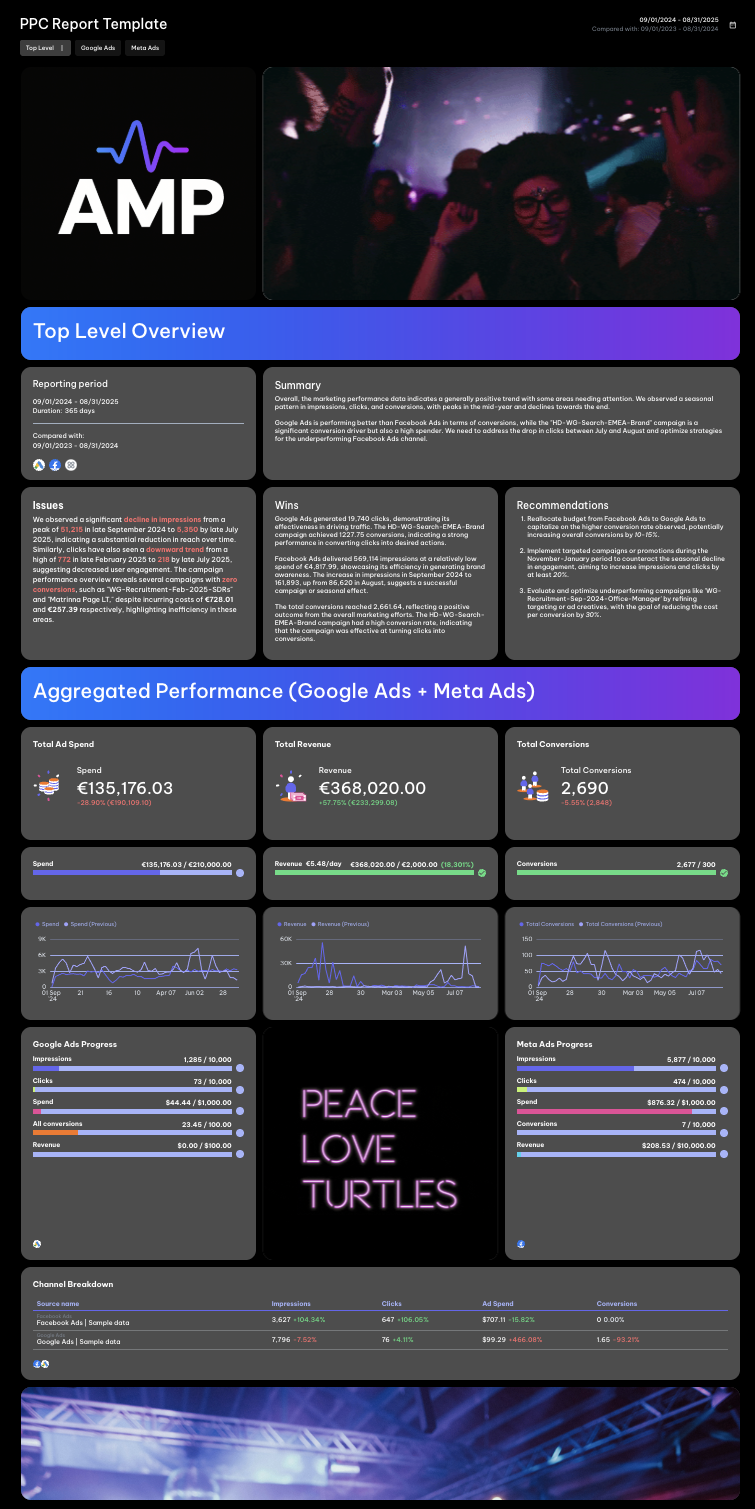
Ready to send your report off? You can send automated emails to specific people on both Geckoboard and Whatagraph.
But with Geckoboard, the only customization you can do is the cadence, day, and time.
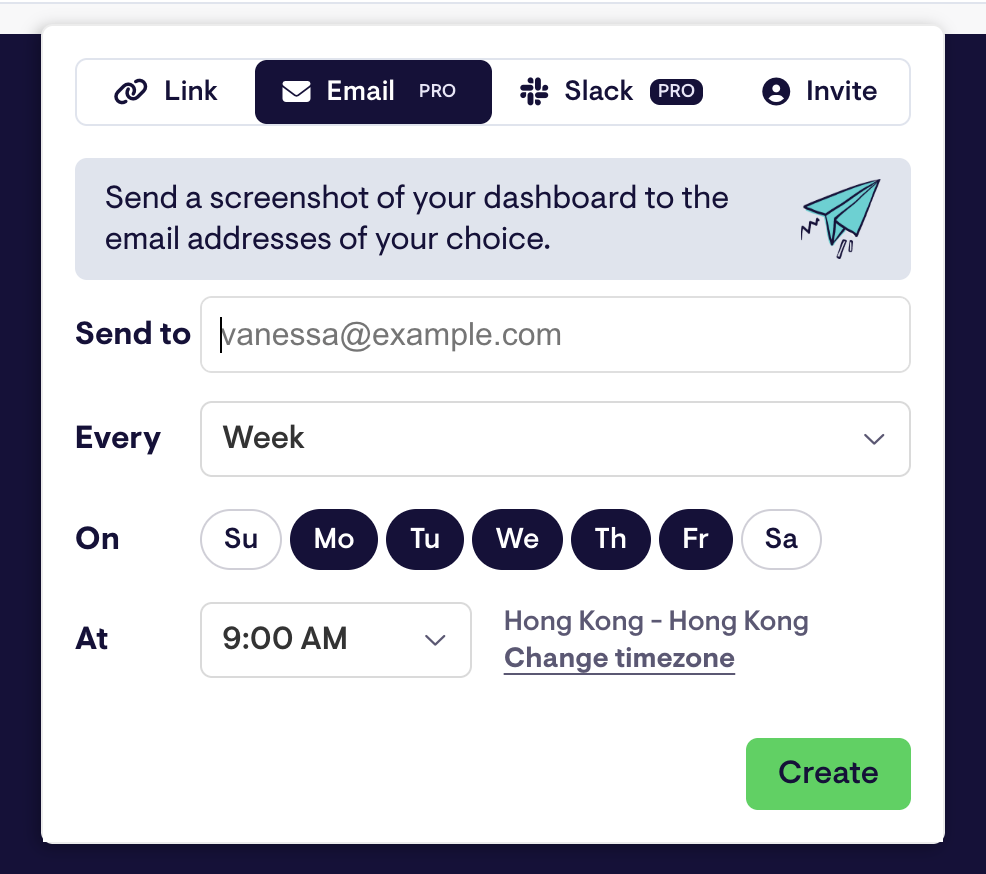
In Whatagraph, you can not only customize these but also:
- the logo
- header text
- body text
- subject lines
- domains
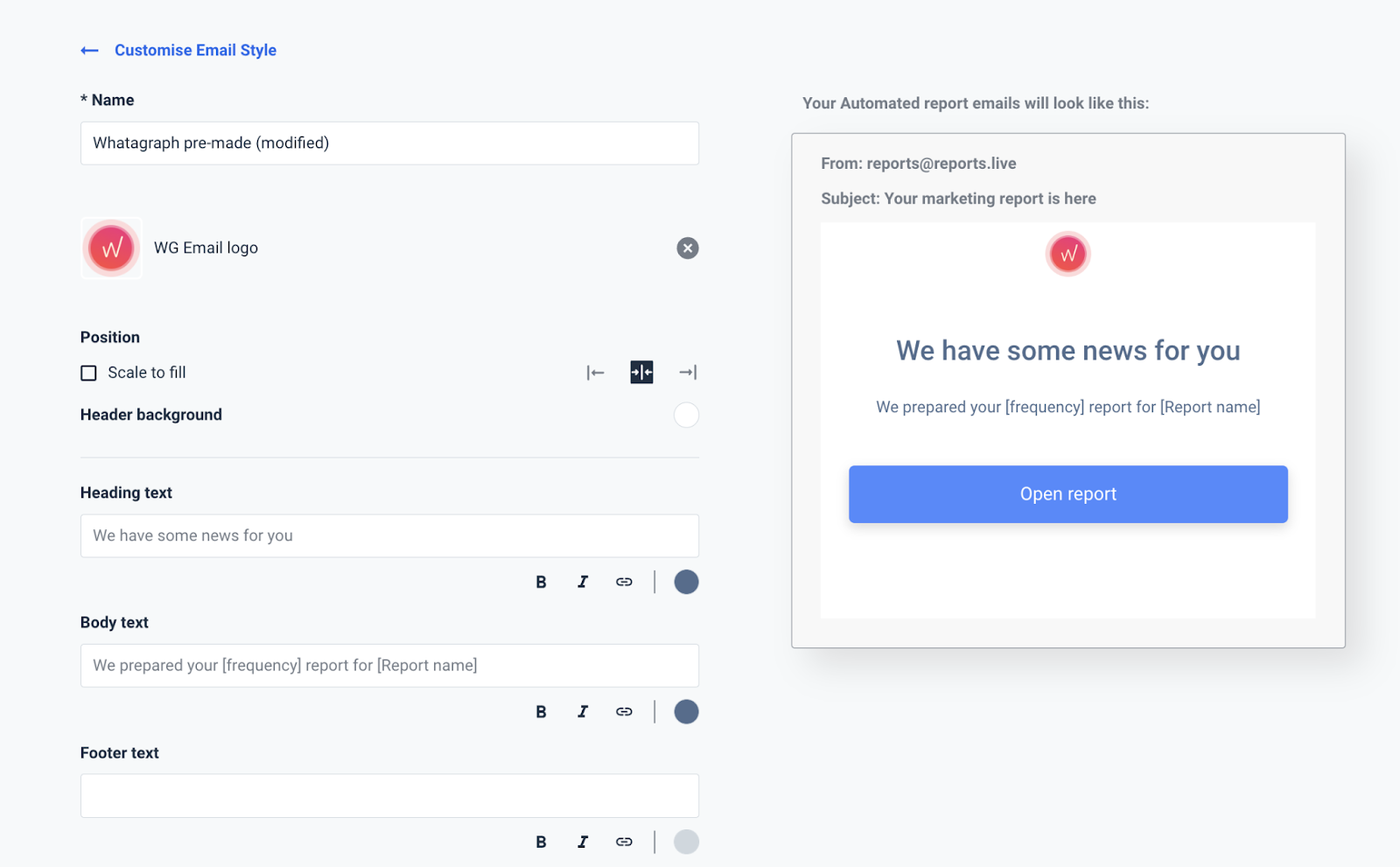 6. Straightforward pricing with real value
6. Straightforward pricing with real value
Geckoboard’s pricing is based on the number of dashboards, editors, and viewers. For example:
- Essential: $60/month for 1 dashboard and 1 editor
- Core: $175/month for 20 dashboards
- Pro: $319/month for 50 dashboards
That means as your reporting needs grow, costs rise quickly, and you’re still capped on how many dashboards and users you can have.
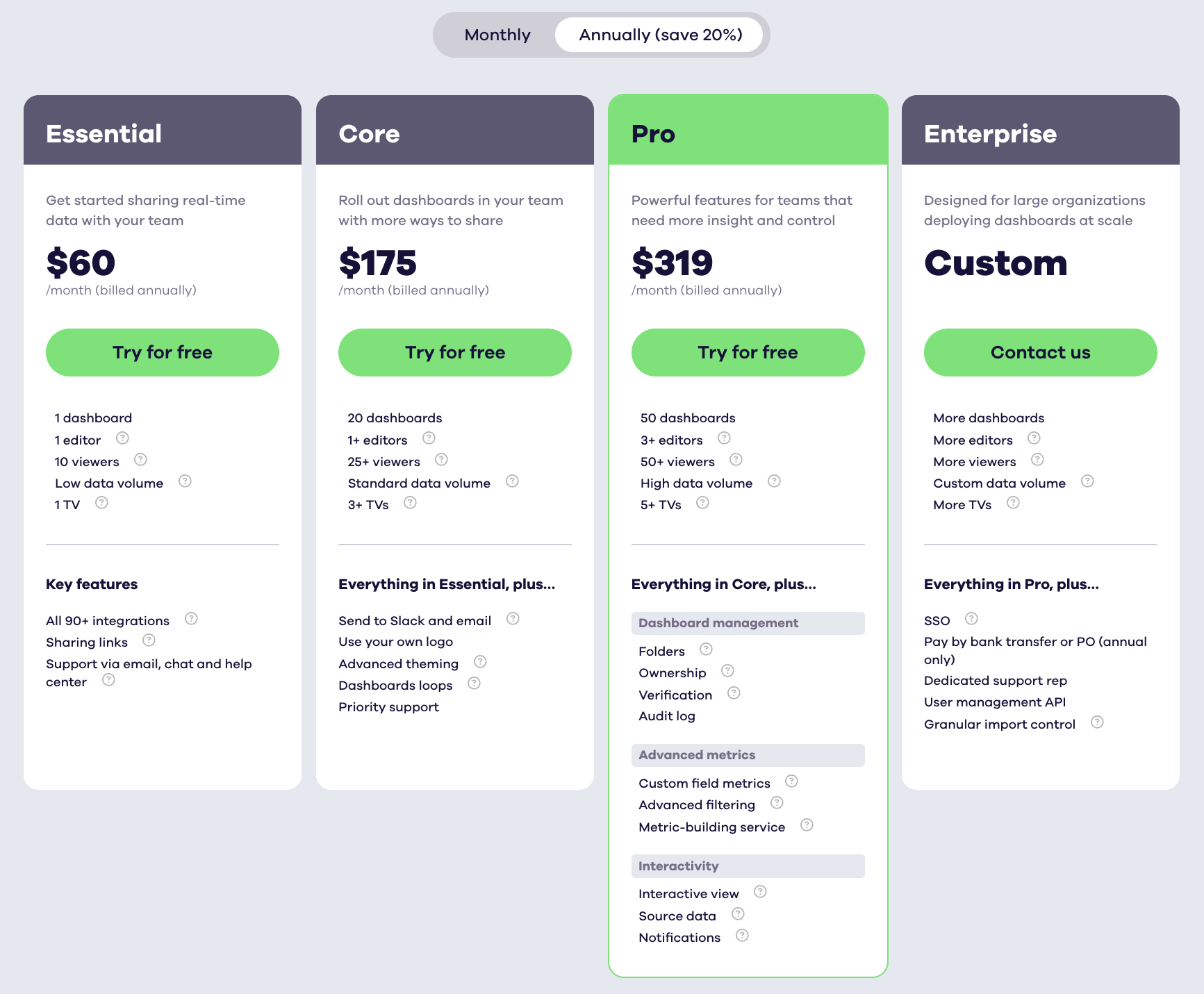
Whatagraph’s pricing is based on source credits, which you use to connect data sources, blend cross-channel data, and send data to a warehouse.
All plans include unlimited dashboards, unlimited users, and powerful AI features.
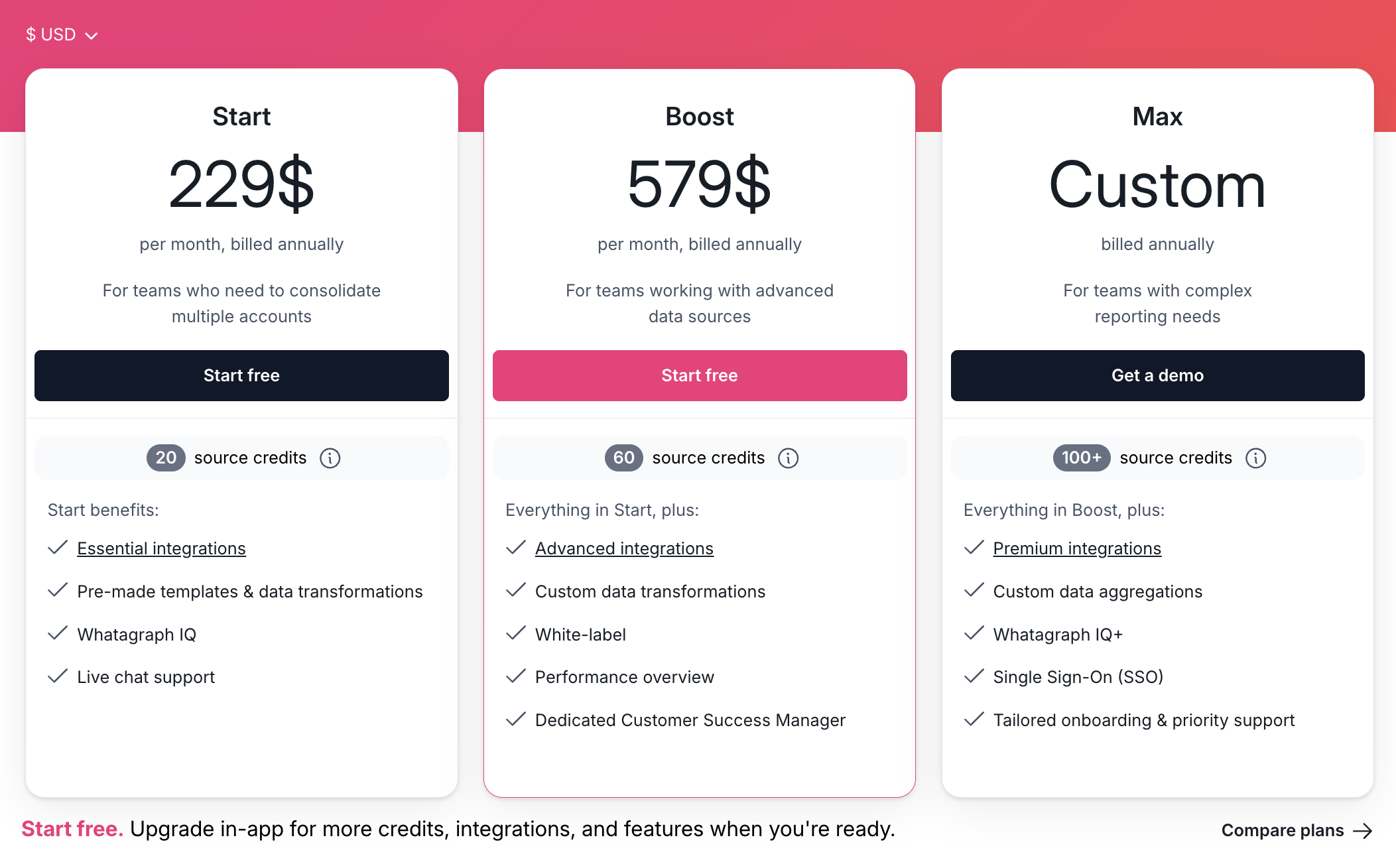 Here’s where Whatagraph delivers more value, even if it might be more expensive than Geckoboard:
Here’s where Whatagraph delivers more value, even if it might be more expensive than Geckoboard:
✅ Unlimited dashboards and users on every plan
✅ Whatagraph IQ included: AI report creation, insights, themes, and summaries
✅ Cross-channel data blending and custom metrics with no-code workflows
✅ White-labeling and IQ Theme for stunning, branded reports in seconds
✅ 30-min data refresh rates across all plans
✅ Direct exports to BigQuery and Looker Studio
✅ Live chat support with <4 min response time
Convinced Whatagraph is the right Geckoboard alternative for you? Start free with Whatagraph today.
Key Features
- 55+ stable native integrations across paid ads, social, SEO, email, and more
- Custom integrations via API, Google Sheets, or BigQuery
- Whatagraph IQ – AI-powered reporting tools
- Versatile drag-and-drop widgets for reports and dashboards
- Custom metrics, dimensions, and data blends
- Performance monitoring overview
- Library of pre-made dashboard and report templates
- Insights – automatic audits of connected data, anomaly detection, and recommendations
- Spaces – organize reports with descriptions, colors, and better team alignment
- Custom branding and white labeling
- Automated report sharing via email or live dashboard links
- Exports: PDF, Excel, CSV, or transfer directly to BigQuery/Looker Studio
Whatagraph Reviews from Real Users
“To me, Whatagraph is like the Tesla or Mercedes of digital analytics tools, their clean and simple way to present complex marketing data. I highly recommend it to anyone working with marketing analytics who values efficiency and clarity in their reporting.” (Source)
“Whatagraph has a simple user interface that is easy to navigate even for those who don't have analytical skills.” (Source)
“What I like best about Whatagraph is having the ability to create reports fast and easy. No more spreadsheets to do reports, they have a great variety of templates.” (Source)
Pros and Cons
Pros:
- All-in-one marketing performance monitoring and reporting solution
- Easy to use by anyone on your team
- Fast campaign performance and insights
- Stunning visual reports
- Makes results easy to interpret
- Excellent live chat customer support
Cons:
- Only one data warehouse destination available
2. Databox
Most suitable for: Boutique agencies and small businesses
Databox is a data reporting and analytics platform for growing businesses.
You can integrate with 100+ software tools, and bring in custom data through Google Sheets or Excel. Then, you can visualize this data directly on Databox using pre-built metrics and templates.
I thought it was very cool that once you login to Databox, you’ll see an overview of your key metrics and AI performance summaries:

This helps you understand performance at a glance.
A unique feature that Databox offers that Geckoboard doesn’t is the Benchmark Groups.
You can join “Invite only” groups where users report on key performance metrics across different channels. This way you can benchmark against whether you’re on the right track with your own campaigns.
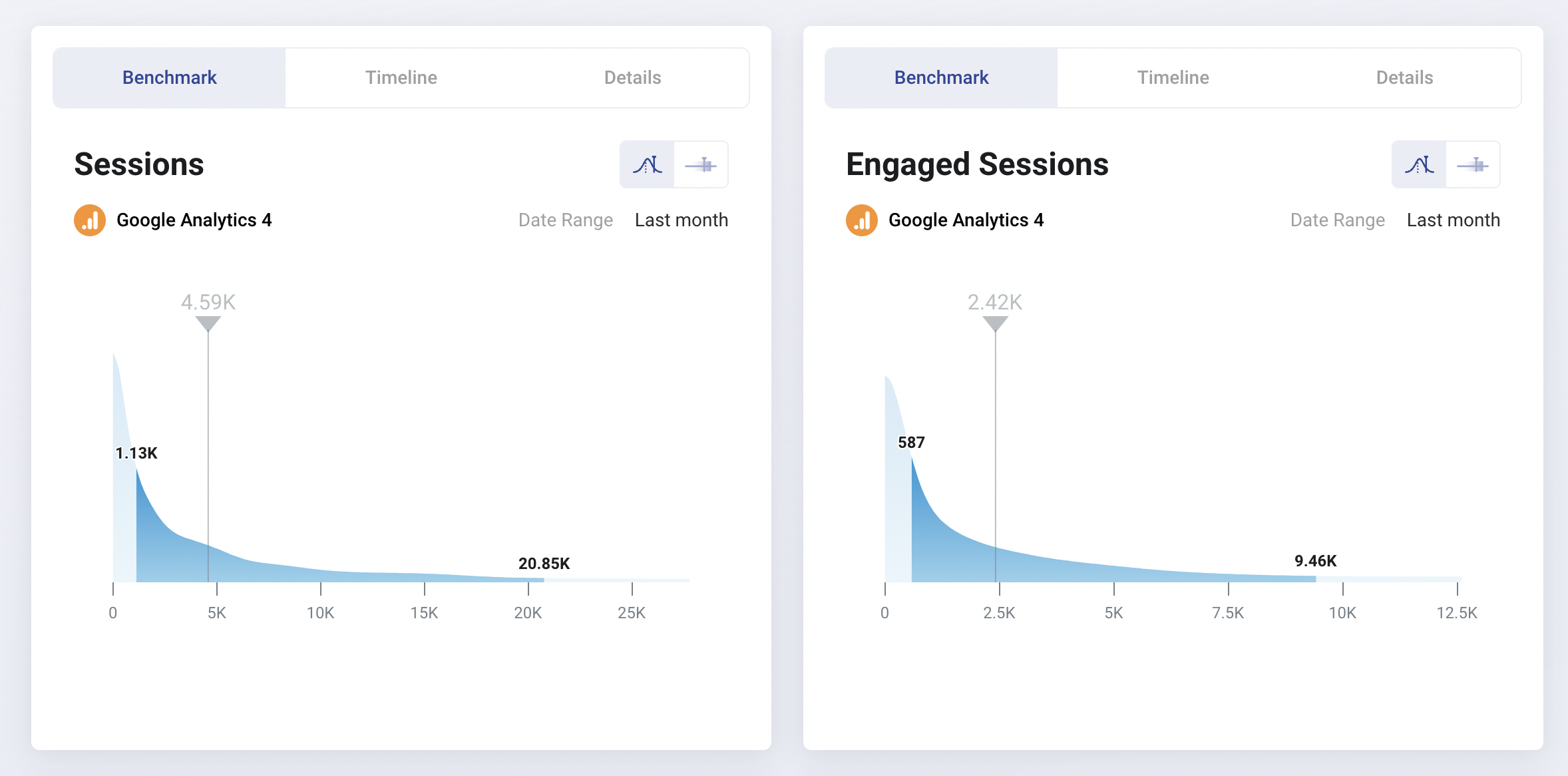 Databox also sends alerts through Slack, email, or app updates when performance trends up or down on your tracked metrics. On TapClicks, this is only possible through emails.
Databox also sends alerts through Slack, email, or app updates when performance trends up or down on your tracked metrics. On TapClicks, this is only possible through emails.
But things get complicated when you actually start to build your own dashboard. You’ll need to manually configure three separate components:
- Metrics – individual metric widgets
- Databoards — live data dashboards (mostly for internal teams)
- Reports — PowerPoint slides style reports (mostly for clients/C-Suite)
For instance, within a Databoard, you’ll need to manually customize each widget, e.g. a line chart.
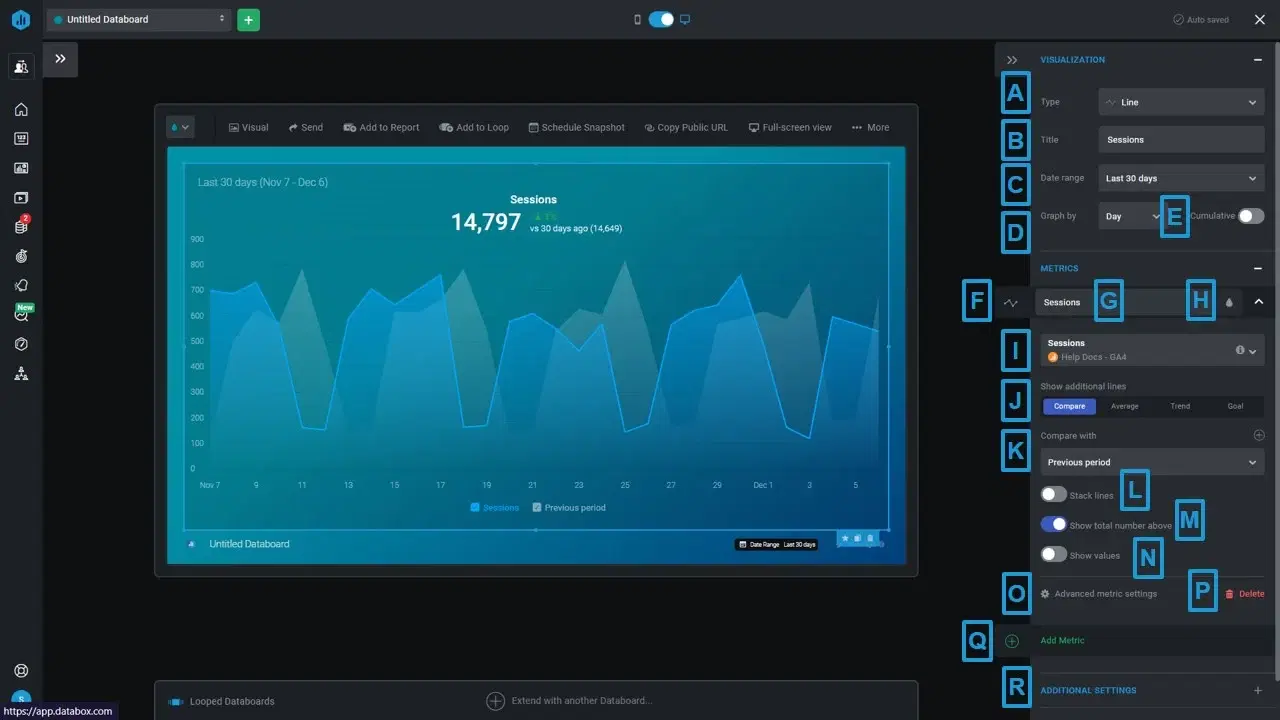 And if you want reports, you’ll need to create a separate “Slide presentation” and manually configure the design all over again.
And if you want reports, you’ll need to create a separate “Slide presentation” and manually configure the design all over again.
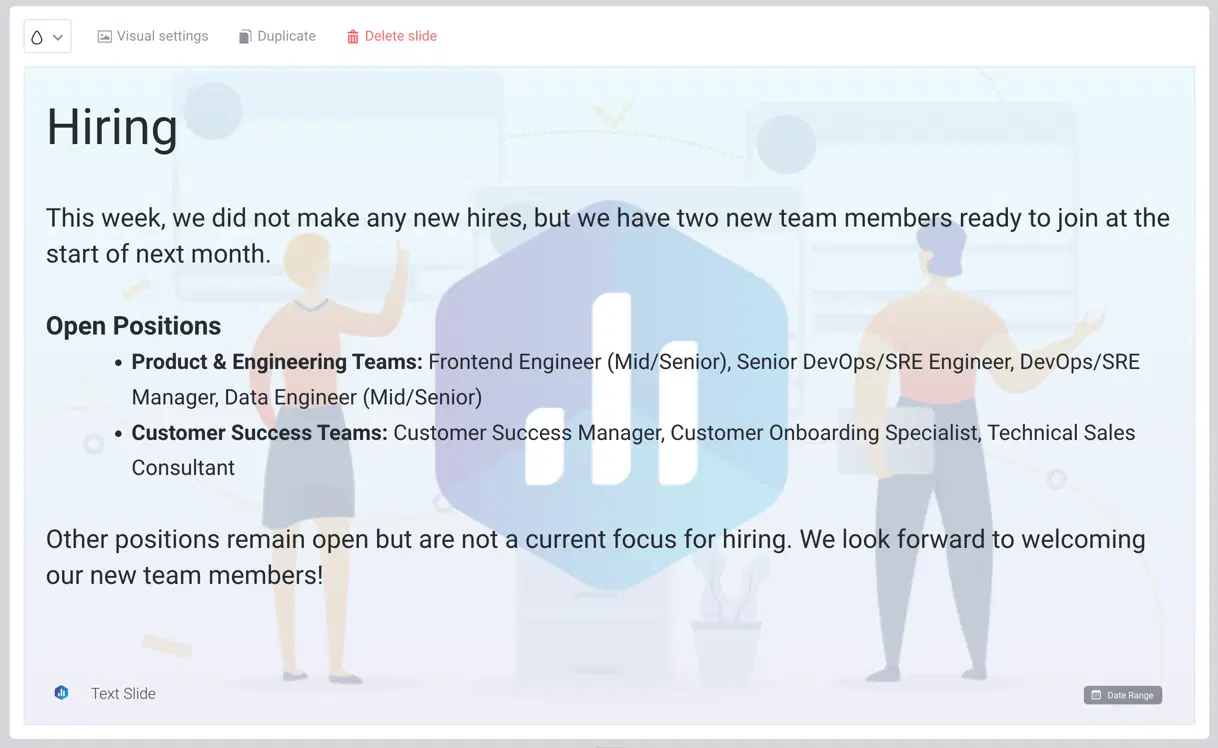
Databox’s reports are also not linked, which means you’ll need to edit them one by one rather than in batch.
All of these can eat up hours of your time. Databox users online also say their integrations break often and there are frequent data outages.
Key Features
- 100+ integrations
- Native visualization dashboards and reports
- Dashboard and report templates
- Slack, email, or in-app alerts
- KPI benchmark groups
Databox Reviews from Real Users
“Databox makes it simple to interact with data in ways you never thought possible.” (Source)
“I'm not sure what has happened with the customer support team at Databox but they are fairly unresponsive these days.” (Source)
"After 2 years I left. Templates always break, individual metrics always break, lack of good support." (Source)
Pros and Cons
Pros:
- Easy to use
- Wide variety of integrations
- Interactive data
Cons:
- Slow customer support
- Bugs and lag issues
- Broken metrics and templates
Databox Pricing
Databox offers five different pricing plans as of October 2024:
- Free: Limited to 3 users, data sources, and dashboards. No custom metrics, data calculations, or report automation available.
- Starter: $341/month for 50 data sources, 5 users, and unlimited dashboards.
- Professional: $451/month for 50 data sources, 15 users, and unlimited dashboards. Includes custom metrics and data calculations.
- Growth: $681/month for 50 data sources, and unlimited users and dashboards.
- Premium: $999/month for 100 data sources, and unlimited users and dashboards.
White-labeling and “guided onboarding” is also only available as an add-on on Databox ($250 and $500 per month respectively). In contrast, these are included in all of Whatagraph’s pricing plans.
3. Klipfolio
Most suitable for: Large data teams at companies and large agencies
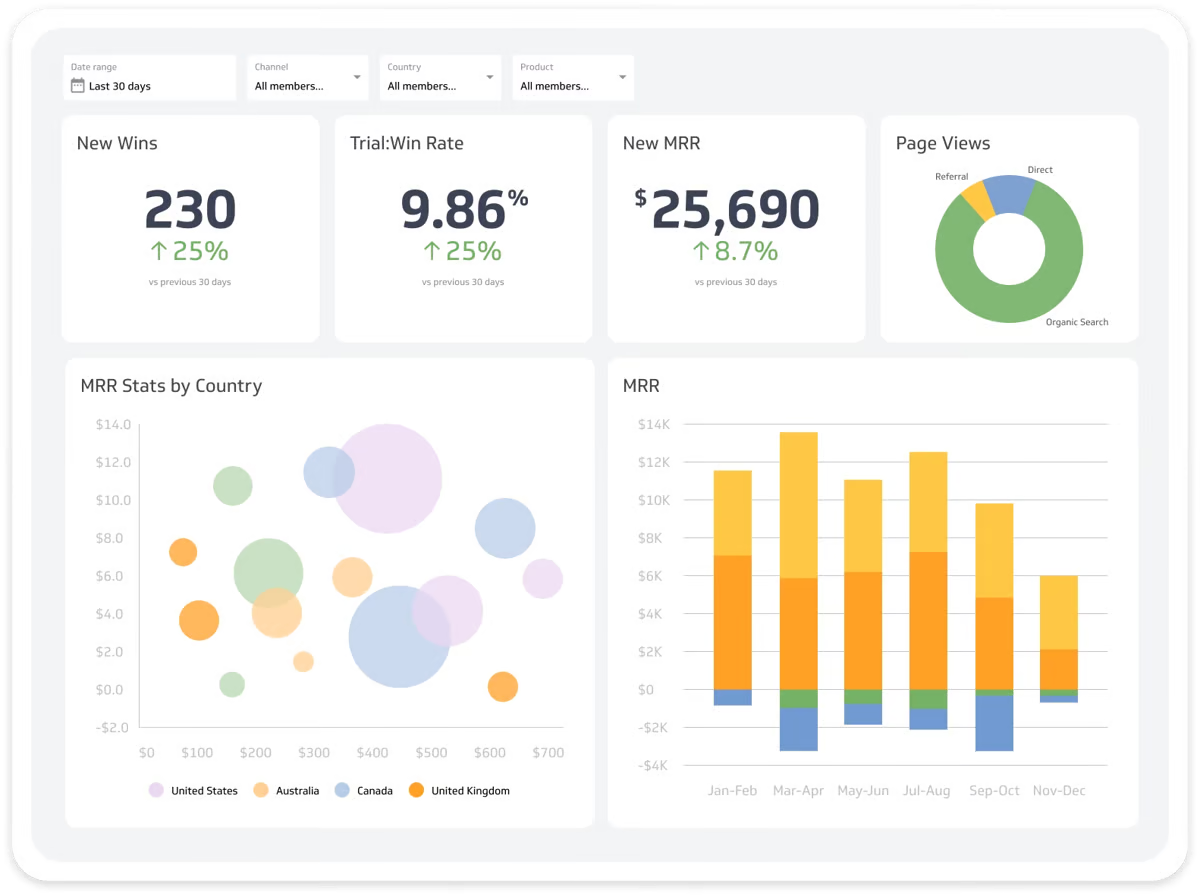 Klipfolio is a data analytics and a business intelligence tool in one. It offers two key products:
Klipfolio is a data analytics and a business intelligence tool in one. It offers two key products:
- PowerMetrics: Suitable for data teams at large companies, this is a data analytics solution to centralize, standardize, and share accurate metrics throughout the organization. Non-data teams can then use these certified metrics for their dashboards and reporting needs.
- Klips: These are your regular data visualization dashboards and reports. Klips integrates with 130+ platforms and you can also use a Rest/URL option for custom integrations.
Klipfolio’s key advantage over Geckoboard lies in PowerMetrics. With it, you can not only connect all your data sources, but also:
- Create a curated metric catalog for other business teams with access control and governance features
- Enable self-serve analysis and AI insights
- Store data in one place—either in your data warehouse, semantic layer, or in PowerMetrics itself
- Share transformed and unified metrics with anyone in the organization
All this is designed to speed up decision-making and reduce ad hoc requests to data teams—if you have a dedicated data team in the first place.
Again, as we mentioned earlier, Geckoboard doesn’t come with this kind of granular data organization features.
Getting started with Klipfolio was easy. I created a Trial account and got access to my first dashboard.
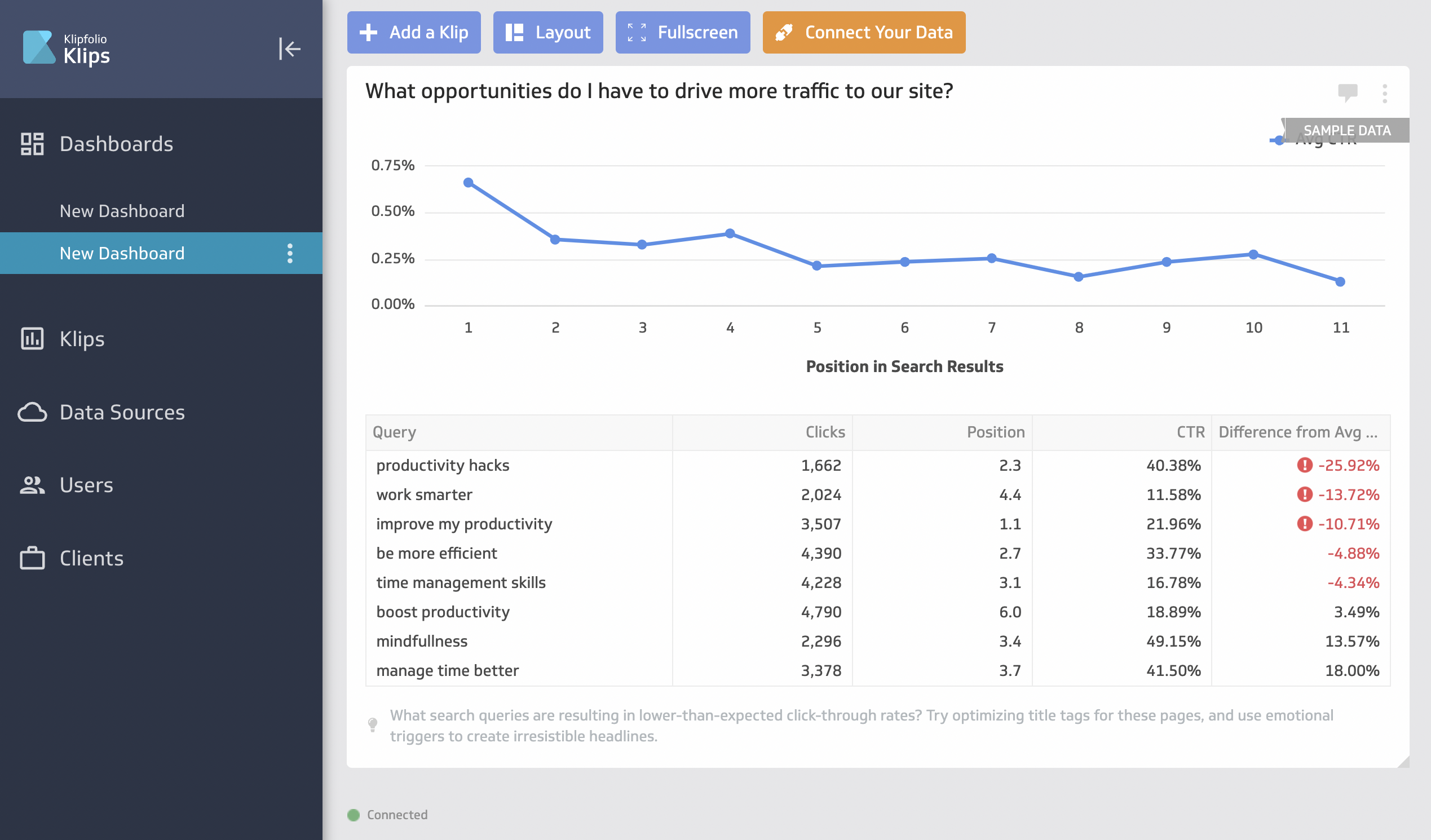 But this is where things got complicated. To visualize your data, you’ll first need to create a “Klip”, which is in a different tab from the dashboard.
But this is where things got complicated. To visualize your data, you’ll first need to create a “Klip”, which is in a different tab from the dashboard.
There are some pre-made Klips like the below screenshot, but for the most part, you’ll need to build a custom one.
 The interface to create a custom Klip can be confusing and clunky (although there is an interactive tour), and it can take you anywhere from 5 to 30 minutes to build one depending on how complex you want it to be.
The interface to create a custom Klip can be confusing and clunky (although there is an interactive tour), and it can take you anywhere from 5 to 30 minutes to build one depending on how complex you want it to be.
 Once you’re done, then you can add this custom Klip onto your dashboard.
Once you’re done, then you can add this custom Klip onto your dashboard.
On Whatagraph, you can create custom widgets natively within your dashboard in seconds. You don’t need to go back and forth from one tab to another—you can simply drag and drop the widgets onto your dashboard.
Key Features
- 130+ integrations including warehouses, SQL databases, and file-sharing services
- Data blending, unifying, aggregating
- Custom metrics and dimensions
- AI insights
- Custom dashboards and reports
- Export dashboards as PDF or image files. Export only individual clips as CSV
- Scheduled reports
Klipfolio Reviews from Real Users
“Klipfolio has a user-friendly interface. It can be easily connected with databases, Excel sheets, and Google sheets which makes data integration very smooth and easy.” (Source)
“I love the full range of capabilities that are possible when building a Klipfolio dashboard (specifically with their Klips product).” (Source)
“Every time I contact support I get the impression that I am bothering them. I will not be renewing this platform because I do not feel valued as a customer.” (Source)
Pros and Cons
Pros:
- Easy to use and set up
- Powerful data analytics and organization options
- AI insights to help make data-driven decisions
Cons:
- Expensive with important features only available as add-ons or in Enterprise plans
- Limited customization for dashboards and templates
- Unhelpful customer support
Pricing
Klipfolio offers three pricing plans for two of their products: PowerMetrics and Klips.
As of October 2024, here are the plans for PowerMetrics:
- 30-day free trial
- Professional: $300/month for 10 users and unlimited metrics.
- Enterprise: Custom pricing for 10 users, unlimited metrics, and priority support.
It’s also important to note that important features like data warehouse integrations, AI insights, and custom domains are only available as add-ons, unless you purchase the Enterprise plan.
Klips’ pricing is further divided into plans for businesses and for agencies.
As of October 2024, here are the plans for businesses:
- Grow: $190/month for 15 dashboards and 1 hr data refresh rate. No priority support or custom onboarding available.
- Team: $350/month for 30 dashboards and 15 min data refresh rate. No priority support or custom onboarding available.
- Team+: $690/month for 60 dashboards and up to the minute data refresh rate. Includes priority support and custom onboarding
As of October 2024, here are the plans for agencies:
- Agency Lite: $190/month for 20 dashboards, 20 clients, and 1 hr data refresh rate. No priority support or custom onboarding available.
- Agency Pro: $420/month for 40 dashboards, 40 clients, and 30-min data refresh rate. No custom onboarding available.
- Agency Premier: $1025/month for 70 dashboards, 70 clients, and 30-min data refresh rate.
Side note: On Whatagraph, you can get unlimited dashboards, unlimited clients, 30-min data refresh rate, priority support, and custom onboarding on ALL our plans. Reach out to us for a pricing plan just for you.
4. Grow.com
Most suitable for: Data analysts at medium to large enterprises
Grow is a no-code, self-serve business intelligence platform that combines ETL, data warehousing, and visualizations on one platform.
You can connect to 75 data sources through native integrations, including popular CRM platforms, marketing analytics tools, databases, and accounting software.
Then, you can prepare and cleanse your data using either noSQL or SQL transformations. This includes custom calculations, data blends, and advanced data filters.
Plus, Grow stores your data automatically on its platform so you don’t need to ship it to a third-party data warehouse.
You can create three types of dashboards on Grow:
- Dynamic dashboards which display data based on who is logged into the account.
- Dashboard Blueprints which are pre-built, single data source dashboards
- Custom & Sandbox dashboards which shows blended data sources and metrics
These dashboards also come with powerful filtering options based on date, number, or categorical logic.
You can then share them through emails, shareable URLs, Slack, TV-mode, or tables of raw and transformed data.
However, Grow is more suitable for internal data storage and monitoring rather than for external reports. Their dashboards are either:
- Very nitty-gritty that it’ll overwhelm clients or the C-Suite, or
- Basic-looking that it’s not visually appealing for clients

Key Features
- 75 native integrations
- Built-in data storage
- SQL or non-SQL based data transformations
- Customizable dashboards
- Advanced data analytics and predictive modeling
- Real-time data updates
Grow Reviews from Real Users
“As an analyst, I have recently started working on this tool and this is by far the best. It helps me to create powerful data visualisation as well as to gain insight from that data.” (Source)
“The interface could be better and overall user experience creates lag sometimes.” (Source)
“The back end seems quite complex to work so really need an IT expert to do the set up, but once it's working it's great for users.” (Source)
Pros and Cons
Pros:
- Intuitive, easy to use interface
- 24/7 customer support
- No-code data pipelines, storage, and visualizations
Cons:
- Occasional lags
- Expensive
- Slow performance when dealing with large volumes of data
Grow Pricing
Grow doesn’t share their pricing publicly.
5. Tableau
Most suitable for: Data teams at large enterprises
 If you’re ready to invest in an enterprise-level business intelligence solution, Tableau is a great choice.
If you’re ready to invest in an enterprise-level business intelligence solution, Tableau is a great choice.
In terms of pricing, this might be a bit of a jump from Geckoboard—but you’ll also get more powerful data exploration features like advanced calculations, statistical functions, and predictive modeling.
You can perform complex data analysis, uncover trends, and identify opportunities for optimization using features such as trend lines, forecasting, and clustering.
Despite these advanced features, Tableau is still (relatively) easy to use with a drag-and-drop interface and visual query builder. You can generate insights quickly and share them with stakeholders through reports.
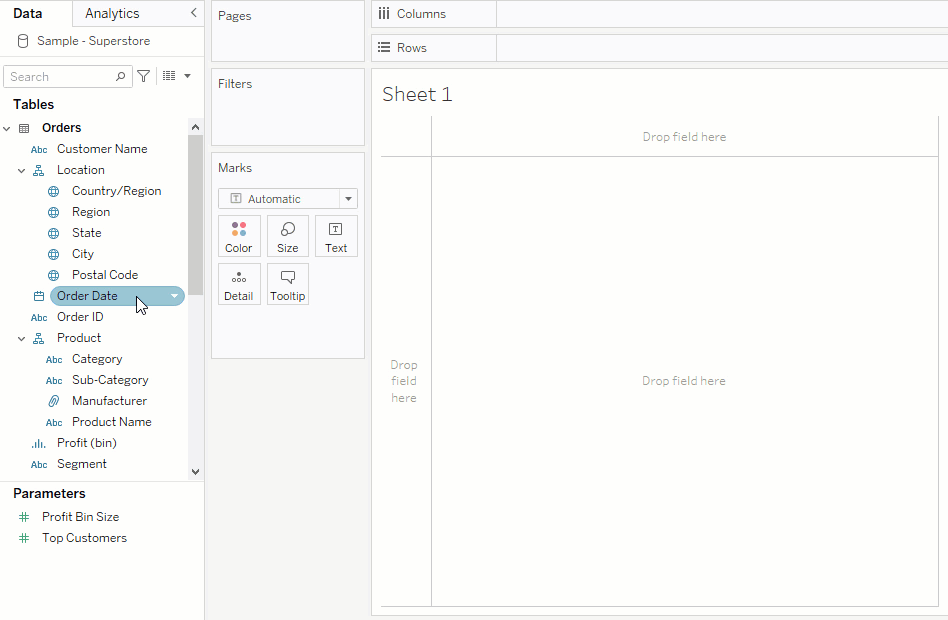 If you need help, you can go to Tableau community forums and ask your questions. A current Tableau user or a moderator will answer you. You can also purchase “Success Plans” that come with personalized training and support.
If you need help, you can go to Tableau community forums and ask your questions. A current Tableau user or a moderator will answer you. You can also purchase “Success Plans” that come with personalized training and support.
Personally, I think the best thing about Tableau is “Einstein”, which analyzes your data from all your sources and channels, and points out patterns or insights you might miss on your own.
For example, it can show you which types of ads are attracting the most customers or predict which customers are likely to make a purchase. This helps you make better decisions because you’re basing them on real data, not just guesses.
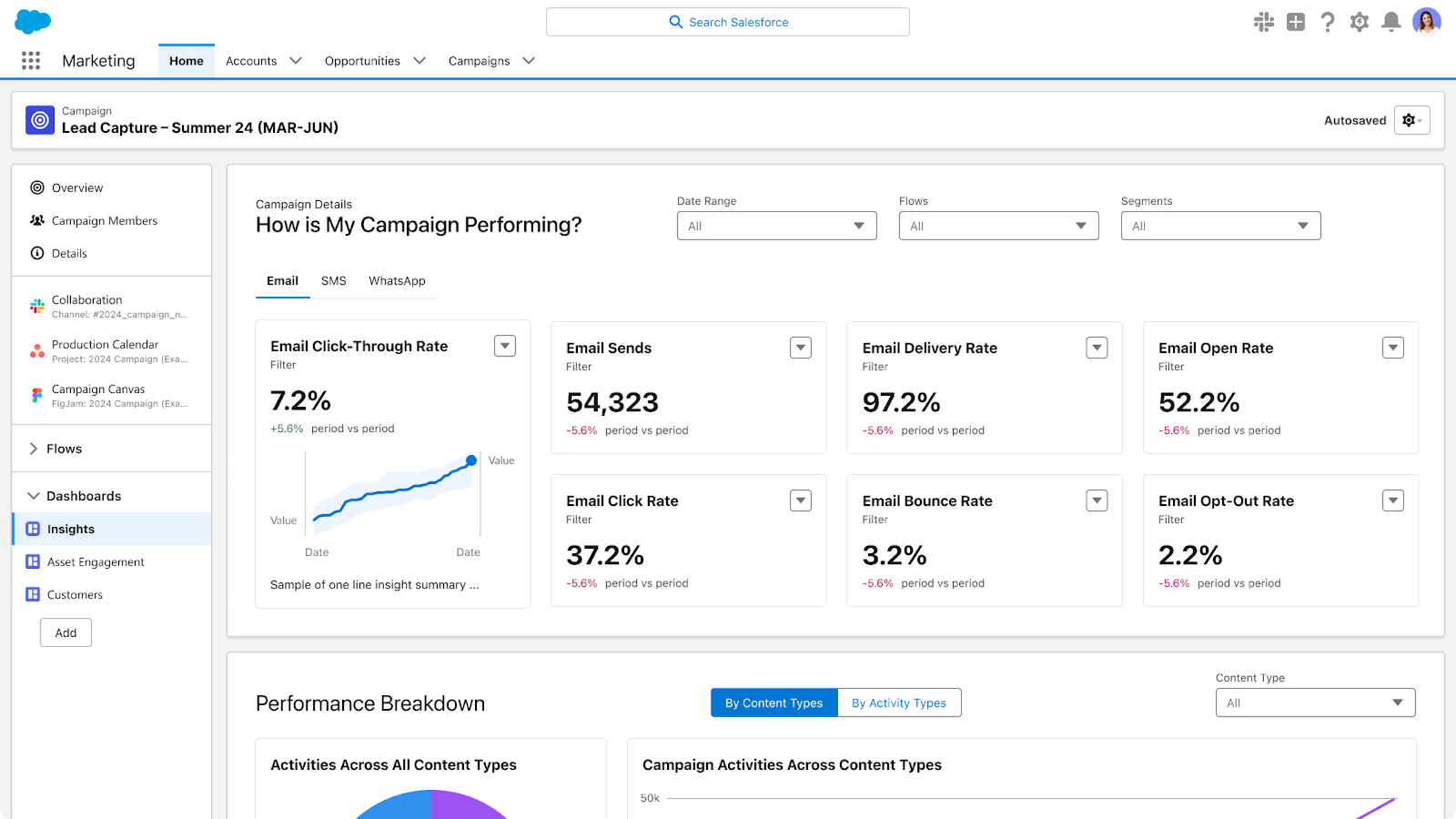 But again, Tableau is a powerful enterprise-grade tool so it can cost you anywhere between $2000-$5000 a month.
But again, Tableau is a powerful enterprise-grade tool so it can cost you anywhere between $2000-$5000 a month.
Key Features
- 90+ integrations
- Custom metrics and dimensions
- Data blending
- Drag-and-drop dashboard interface
- AI-powered insights
Tableau Reviews from Real Users
“Tableau allows me to create my own structured data from a lot of unstructured data.” (Source)
Tableau has an uncanny ability to transform complex data into visually stunning and easily understandable representations.” (Source)
“Tableau can be costly, particularly for startups.” (Source)
Pros and Cons
Pros:
- Powerful data analytics and visualization
- Easy to use and implement
- Seamless data integrations
Cons:
- Can be expensive if you need advanced features
- Takes a lot of time to load for large datasets
- All the preprocessing of the data (data cleaning) has to be done beforehand. Data cleaning cannot be done in Tableau
Tableau Pricing
As of October 2024, Tableau offers three pricing plans:
- Viewer: $35/user/month, billed annually
- Explorer: $70/user/month, billed annually
- Creator: $115/user/month, billed annually
6. Looker Studio (a.k.a. Google Data Studio)
Most suitable for: Freelancers and boutique agencies
Only need integrations with Google platforms? Looker Studio is a great choice.
Looker Studio is a (sort of) free client reporting tool that comes with 21 native integrations with Google-based platforms like Google Ads, DV 360, Google Sheets, and Google Analytics.
You can also connect to BigQuery, MySQL, and Microsoft SQL servers on Looker.
The biggest advantage of Looker Studio over Geckoboard is that its highly customizable. Once your data sources are connected, you can use Looker’s drag-and-drop report editor to add:
- Charts, line bars, pie charts, geo maps, area and bubble graphs, data tables, pivot tables
- Filters and date range controls
- Links and clickable images
- Custom text and images
- Custom styles and color themes
You can then invite teams or clients to view or edit your reports, or send them links in scheduled emails.
However, keep in mind that Looker Studio is only free for Google-based tools (e.g. Google Analytics 4, Google Ads).
For non-Google data, you’ll need to use a data pipeline tool like Funnel or Supermetrics to push it into Looker. And users say connections would always break and the data would be constantly late or inaccurate on reports.
Looker Studio reports can be time-consuming and difficult to build. You’ll need to manually customize each widget, graph, chart, and images. For instance, this is what a report “canvas” looks like as you start building one—I don’t know about you but this immediately overwhelmed me as a non-tech savvy person.
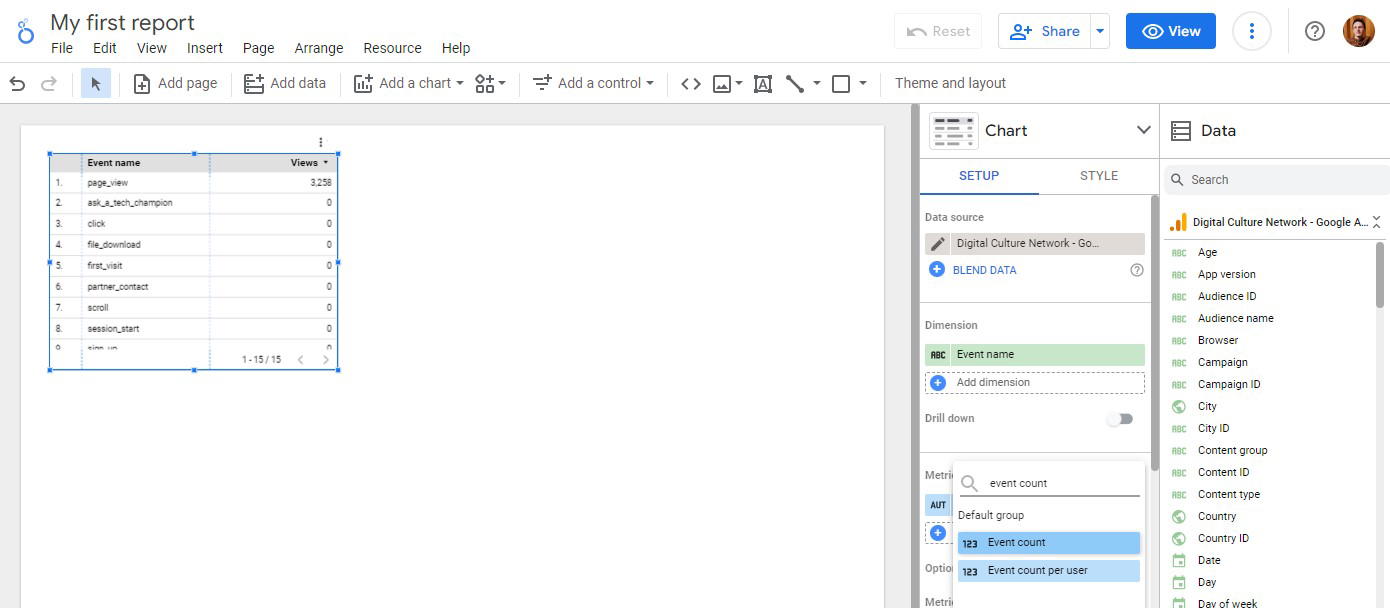 Source: Digital Culture Network
Source: Digital Culture Network
But again, it’s a solid choice if you just need to visualize your data from Google-based platform, but I wouldn’t recommend it if you need to connect to other channels.
Key Features
- 21 native connectors (free)
- 1000+ “partner” connectors (paid)
- Drag-and-drop report builder
- Data blends
- Custom images and text
- Custom styles and color schemes
- Mobile app
Looker Studio Reviews from Real Users
“I love the way you can present data from multiple sources in one report. I also love the ability to blend different tables and show the information in one chart.” (Source)
“Unfortunately, connectors break quite regularly and reports containing a lot of data can take a lengthy time to load.” (Source)
“Looker studio needs more report downloading options such as Word and PDF.” (Source)
Pros and Cons
Pros:
- Free (to an extent)
- A huge range of data visualization formats and options
- Easy to use for basic reports
Cons:
- Slow loading
- Connection breakages and inaccurate data
- Limited report sharing options (no Word, Sheets, or PDFs)
Looker Studio Pricing
Looker Studio is free for connections with 21 native integrations, which are mostly Google-based platforms.
7. DashThis
Most suitable for: Small businesses and freelancers
DashThis is a simple marketing reporting tool that connects to 34+ marketing platforms and visualizes KPIs on dashboards.
If you don’t see a built-in integration you need, you can also upload your own data using a nifty CSV file or a Google sheet.
To create a dashboard, you can either start from scratch or pick a dashboard template.
 There are three key types of dashboards you can build:
There are three key types of dashboards you can build:
- Periodic dashboards: These are dashboards based on specific time periods and cadence, like daily, weekly, monthly, semi-annually, and annually.
- Campaign dashboards: These dashboards are used to isolate and highlight a specific campaign for a custom date range.
- Rolling dashboards: These dashboards show trends of metrics for three different date ranges.
On the more pricier plans, you’ll get a dedicated product specialist assigned to you who will help you set up your dashboards.
DashThis also comes with a “Merge” widget where you can combine metrics from different data sources.
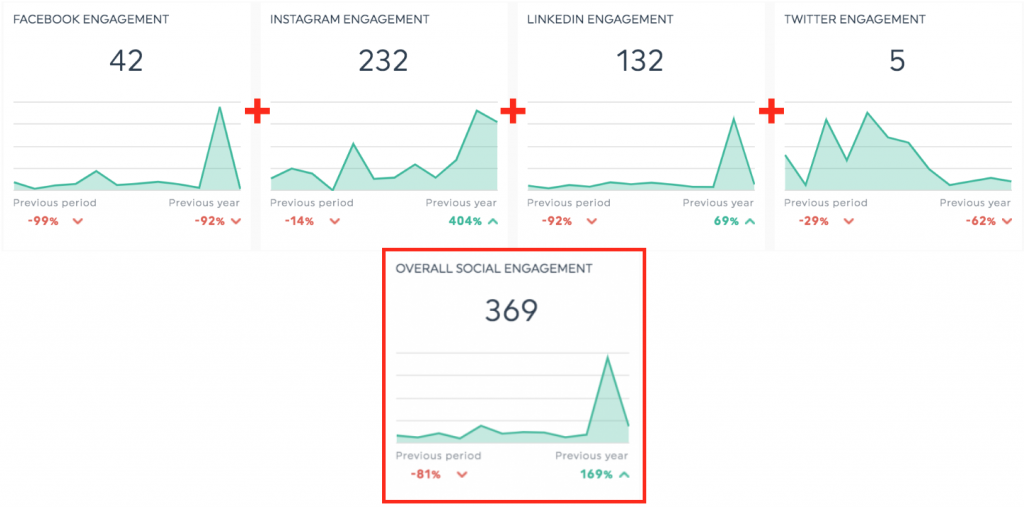 When it comes to whitelabeling, DashThis offers more options than Geckoboard. You can:
When it comes to whitelabeling, DashThis offers more options than Geckoboard. You can:
- Create custom domains
- Remove the “DashThis” logo
- Customize color schemes
Side note: You can do all this on, and more, on Whatagraph.
However, DashThis is more suitable as a reporting tool rather than a data analytics platform. There are very few options to customize or organize your data on DashThis.
You can only “merge” widgets together in DashThis; you can’t blend data sources to the full extent or create advanced metrics and dimensions. On Whatagraph, you can easily organize your data any way you’d like using simple workflows.
Key Features
- 30+ integrations
- Custom data upload via CSV file or Google sheets
- Visualization dashboards
- Automatic data refreshes
- Upload client or band logos
- Create custom widgets, domains, color schemes, and email addresses
- Library of report templates
- Report sharing via email, URL, or PDF
DashThis Reviews from Real Users
“DashThis is super user friendly. I am someone who doesn't know too much about Data Dashboards, but this platform was super easy to use.” (Source)
“There are some limitations to what you can bring in and they don't yet offer custom calculations.” (Source)
“It is a little annoying to move things around in a dashboard. You have to move each individual widget to a new section rather than moving an entire section in a dashboard.” (Source)
Pros and Cons
Pros:
- Easy to use and set up
- Many templates and dashboard examples available
- Relatively inexpensive
Cons:
- Limited data organization and customization features
- Limited data integrations
- Basic-looking reports
DashThis Pricing
As of October 2024, DashThis offers four pricing plans:
- Individual: $49/mo or $42/mo, paid yearly. Includes 3 dashboards. No white-labeling features, personalized onboarding, or priority support.
- Professional: $149/mo or $127/mo, paid yearly. Includes 10 dashboards. No personalized onboarding or priority support.
- Business: $289/mo or $246/mo, paid yearly. Includes 25 dashboards, white-labeling, personalized onboarding, and priority support.
- Standard: $449/mo or $382/mo, paid yearly. Includes 50 dashboards, white-labeling, personalized onboarding, and priority support.
8. Cyfe
Most suitable for: Boutique SEO agencies
Cyfe is a business dashboard app and reporting platform that helps you easily monitor your business data from one place and make better decisions.
You can pull data from 100+ integrations including social media, email, SEO, and sales and finance tools. You can also bring in custom data via .CSV, Google Sheets, SQL, private URL, or push API.
To build visualizations, you can start from their dashboard templates or pre-built widgets.
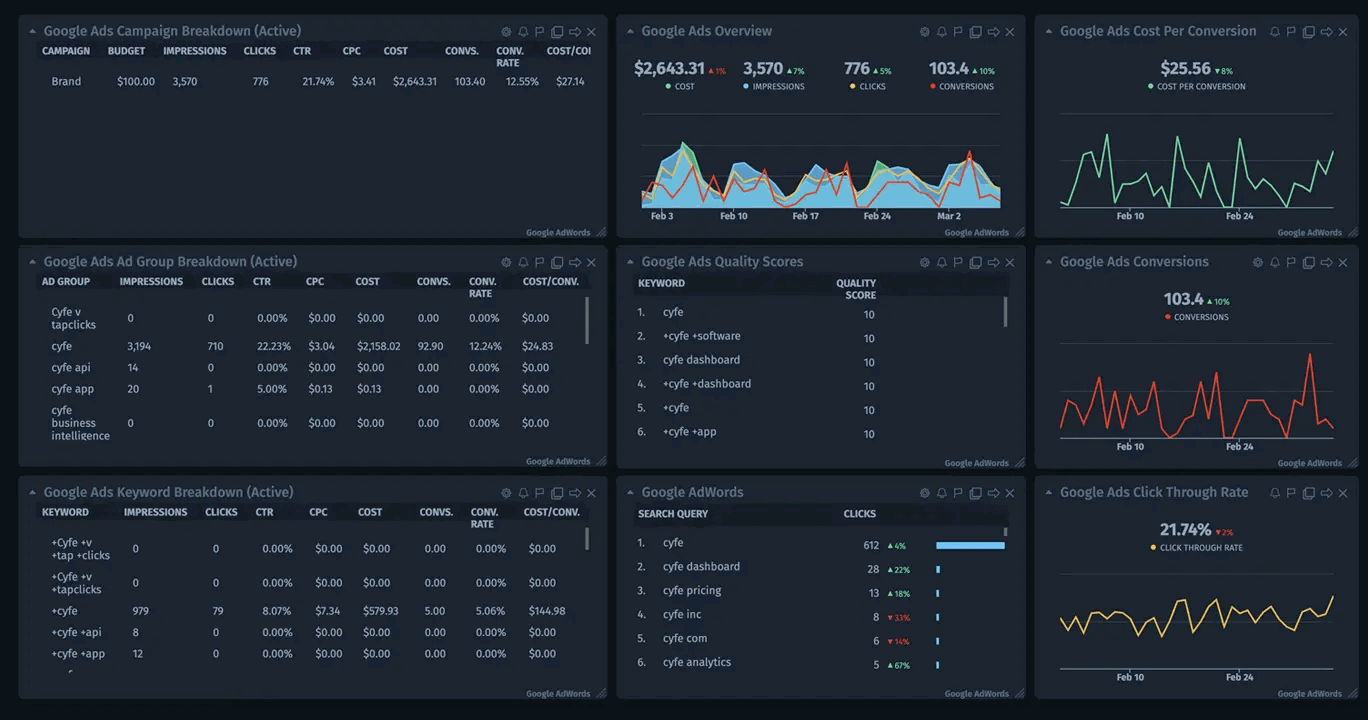
One cool thing about Cyfe is that they offer a very extensive library of chart widgets, such as multi-chart, cohort, and Gantt, to help make sense of your data.
The platform also comes with “Embedded Analytics” where you can take an entire dashboard or a widget and embed it to emails, webpages, or applications.
For SEO managers, Cyfe offers a built-in keyword ranking tool which allows you to automatically monitor website rankings across Yahoo, Google, and Bing. 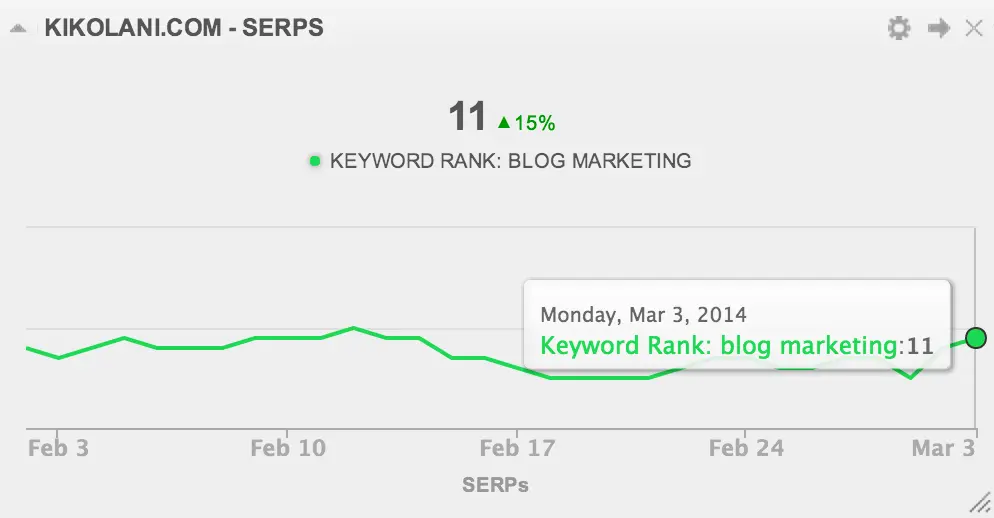 The unique thing about Cyfe is that it supports 15 languages, including Korean, Turkish, and French.
The unique thing about Cyfe is that it supports 15 languages, including Korean, Turkish, and French.
However, Cyfe does not come with any advanced data calculations or organization features, nor can you transfer data to warehouses or other destinations.
Key Features
- 100+ integrations
- A wide library of dashboard templates
- Embedded analytics
- Custom and pre-build widgets
- Built-in keyword tracking tool
Cyfe Reviews from Real Users
“It's very easy to create your dashboard and populate it with widgets from different data sources like social media, email marketing software, CRM, or just custom data in a spreadsheet.” (Source)
“The dashboards were very limited on customization and creating calculated fields.” (Source)
“Support really sucks. This never used to be the case BTW.” (Source)
Pros and Cons
Pros:
- Easy to use and set up
- Wide range of integrations
- Affordable price
Cons:
- Incorrect data on widgets
- Poor customer service
- Limited customization and data transformation features
Cyfe Pricing
As of October 2024, Cyfe offers five pricing plans:
- Starter: $19/month for 2 dashboards and 1 user
- Standard: $29/month for 5 dashboards and 2 users
- Pro: $49/month for 10 dashboards and 5 users
- Premier: $89/month for 20 dashboards and unlimited users
- Agency: $150+/month for 100 dashboards, 15 users, 10 clients, and white-labeling features
9. AgencyAnalytics
Most suitable for: SEO and content marketing agencies
AgencyAnalytics is a close Geckoboard marketing alternative and a great marketing and SEO reporting tool.
You can connect to 80+ data sources, including major SEO platforms like Ahrefs, Backlink Monitor, and Semrush, as well as social channels like Facebook, Instagram, and LinkedIn.
It comes with a suite of SEO tools like Rank Tracker, Site Auditor, and Backlink Manager, making it easy to monitor and report on your SEO performance. You can track rankings daily, monitor backlinks, and keep up with the competition.
![]() You can also manage clients and staff on the platform through granular user access and permissions.
You can also manage clients and staff on the platform through granular user access and permissions.
AgencyAnalytics’ key advantage over Geckoboard is their AI insights. You can ask AI to write you performance summaries (although readability is not that great).

Or you can also ask AI to identify an opportunity, highlight an issue, or celebrate a win.
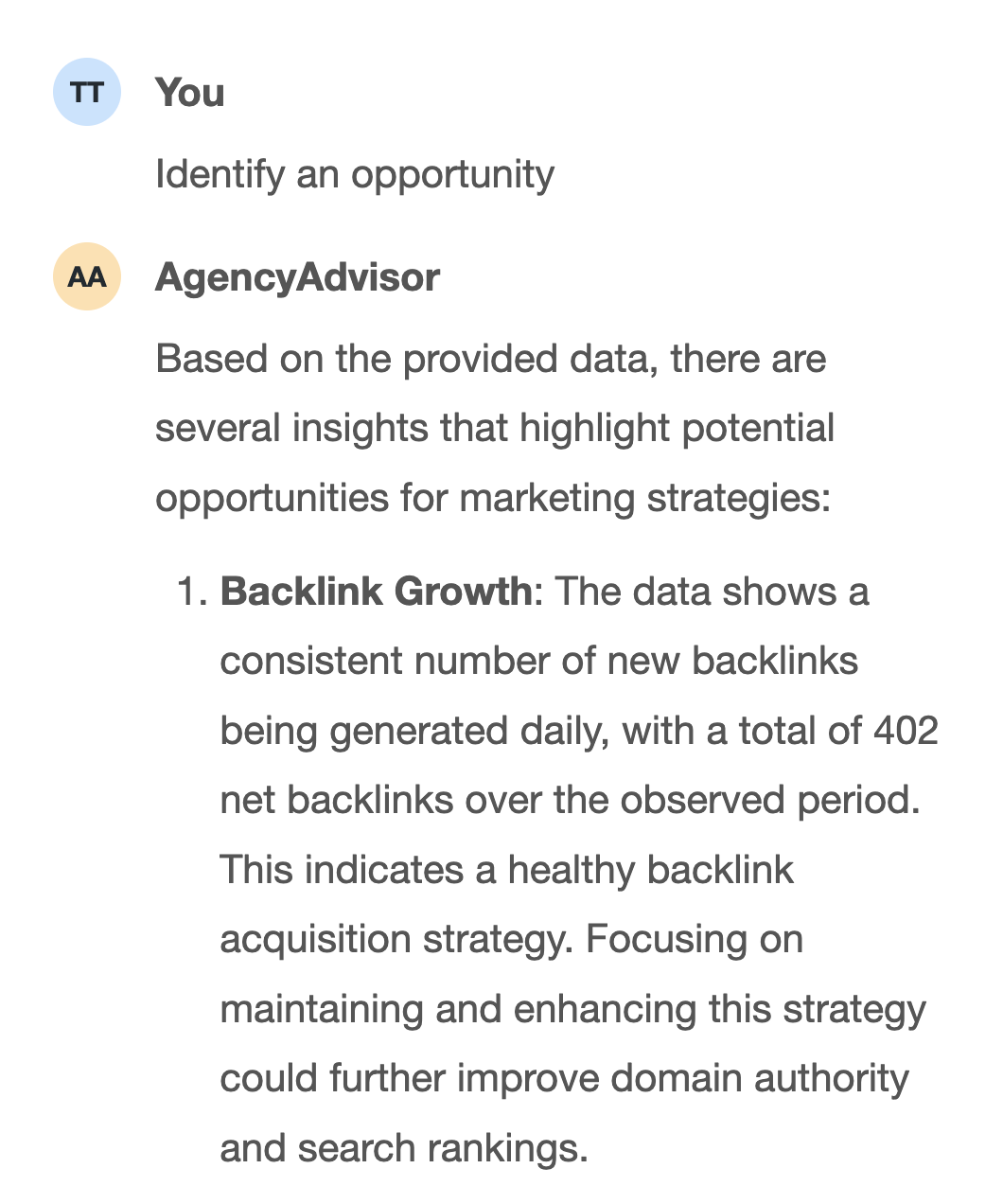 However, users say the platform can be unstable with sources disconnecting frequently due to “service bandwidth” issues. AgencyAnalytics also doesn’t come with advanced data calculations and their dashboards are rigid and limited.
However, users say the platform can be unstable with sources disconnecting frequently due to “service bandwidth” issues. AgencyAnalytics also doesn’t come with advanced data calculations and their dashboards are rigid and limited.
Key Features
- 80+ integrations
- Ready-made report templates
- White-labeling
- Client and staff management
- SEO tools
- AI insights
AgencyAnalytics Reviews from Real Users
“AgencyAnalytics helps me create quick, automated, and clean reports for our clients which saves me a ton of time.” (Source)
“It can sometimes be a little buggy and take time to load. Adding new integrations can sometimes be challenging because of this.” (Source)
“I would like the capability of merging data from different platforms in graphs and metrics (e.g. using data from Google Ads with GA4) in the same section. I also don't like that some platforms aren't yet available (e.g. Reddit).” (Source)
Pros and Cons
Pros:
- Easy to set up and use
- A wide library of ready-made report templates
- Cost-effective
Cons:
- Buggy
- Lack of advanced data calculations and organization features
- Limited integrations
AgencyAnalytics Pricing
As of October 2024, AgencyAnalytics offers three plans:
- Freelancer: $79/month for 5 client campaigns
- Agency: $179/month for 10 client campaigns
- Custom: For established agencies with 50+ clients
10. Swydo
Most suitable for: Small PPC or digital marketing agencies
Swydo is an automated monitoring and reporting platform for marketers. Here are three key aspects of the platform:
- Data collection: Integrate with 32+ platforms and combine your data into one comprehensive report. These integrations include popular channels like Google Ads, Facebook Ads, and Google Sheets.
- Reporting: Create reports easily using templates and their library of metrics and pre-set widgets. Or, add your own customized widgets. Share custom reports as PDF, dashboards, or live presentation.
- Monitoring: Monitor client or stakeholders’ KPIs to quickly identify and address issues and opportunities. Sywdo comes with KPI boards, clients KPI overviews, and alert notifications.
Swydo’s key advantage over Geckoboard is how customizable its dashboards are. For one, you can create “Brand templates” which are custom color schemes for your brand.
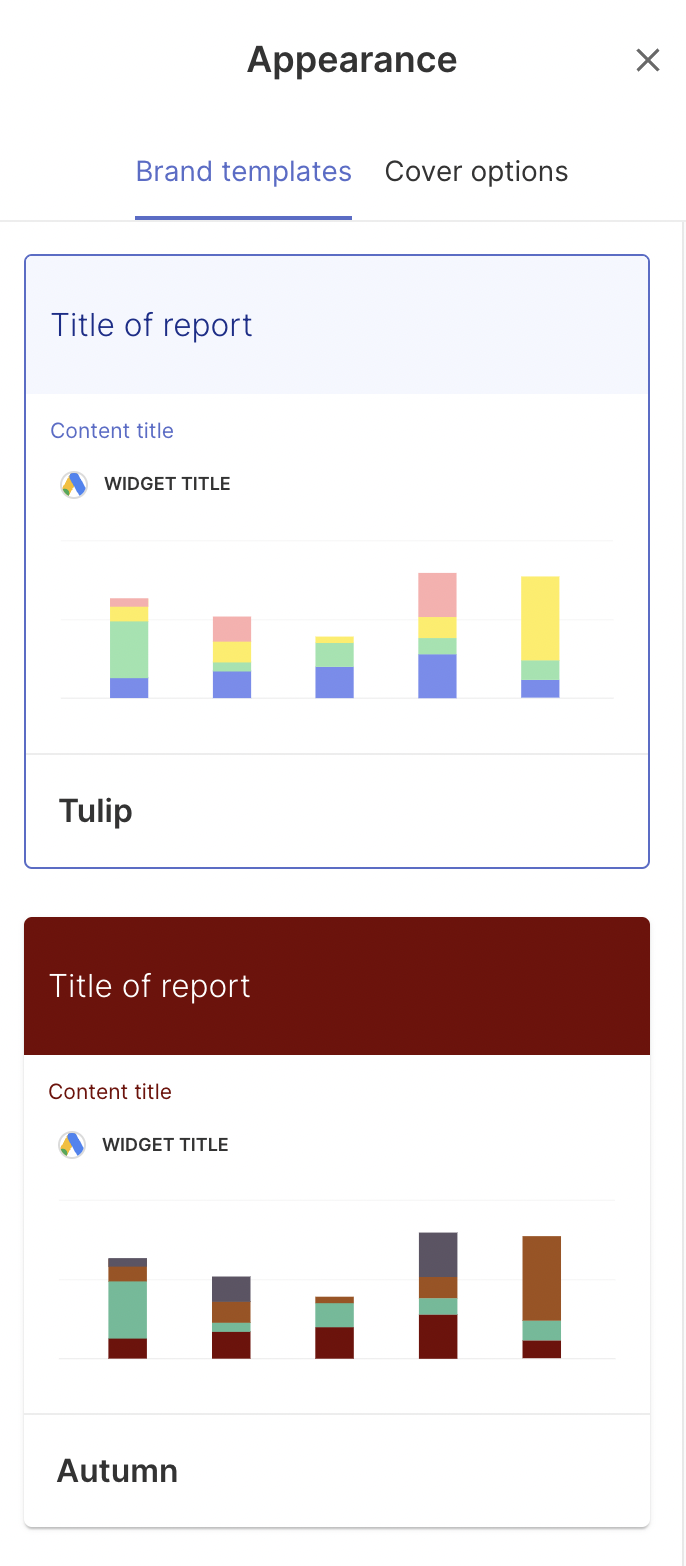
You can also pick and choose what you want to show on the report cover, such as:
- Author
- Client logo and name
- Date range
- Subtitle and title
- Team logo and name
The result is a colorful marketing report like this:
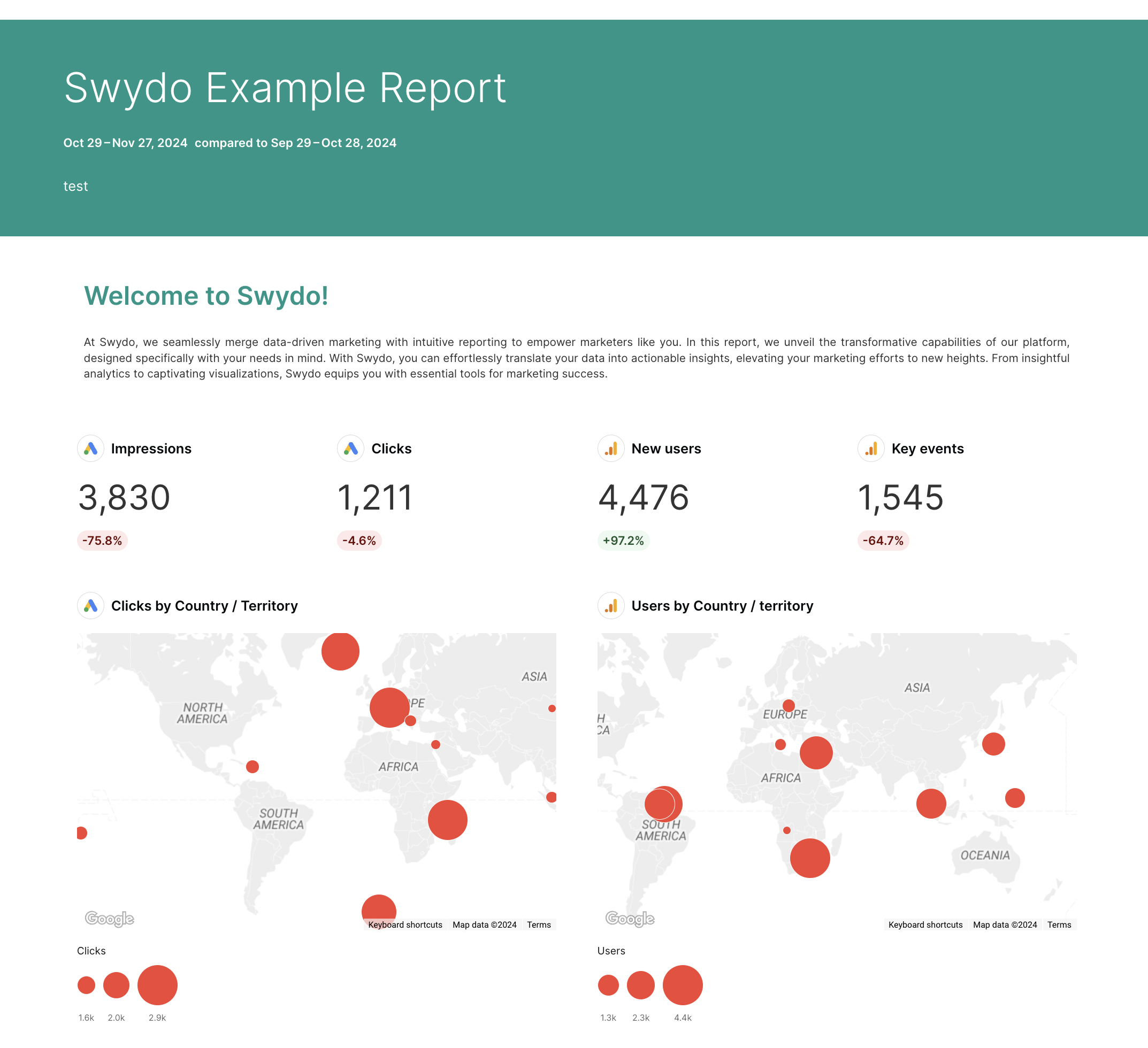 The next feature I like about Swydo is their Monitoring tab. You can see an overview of key metrics for each client and whether they’re trending up or down. This is similar to Whatagraph’s Overview.
The next feature I like about Swydo is their Monitoring tab. You can see an overview of key metrics for each client and whether they’re trending up or down. This is similar to Whatagraph’s Overview.
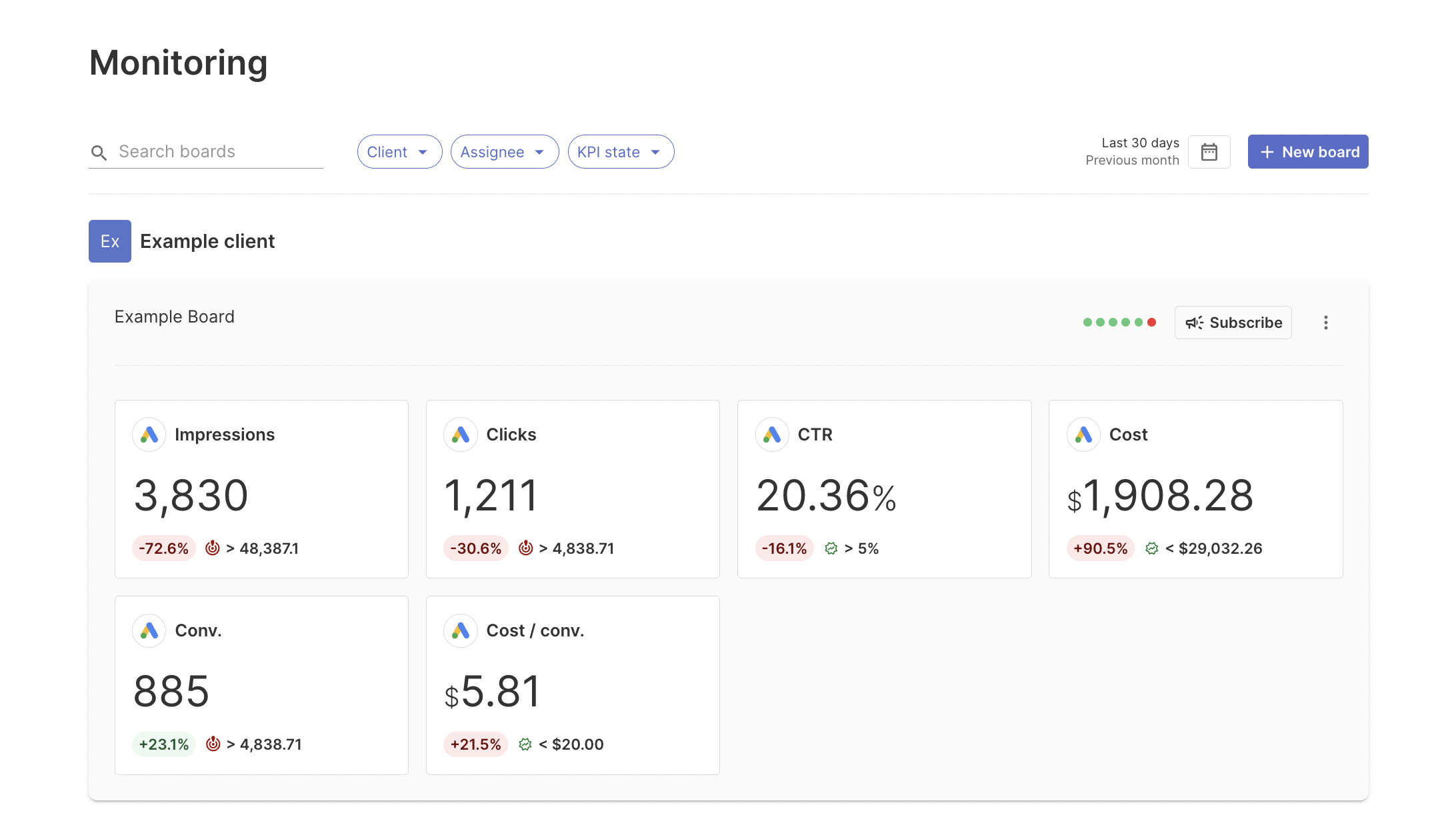 However, Swydo can also be very limiting. Apart from a basic “Custom metric” builder, you can’t blend data sources or create custom dimensions on Swydo. This can lead to messy reports with inaccurate data and inconsistent dimensions.
However, Swydo can also be very limiting. Apart from a basic “Custom metric” builder, you can’t blend data sources or create custom dimensions on Swydo. This can lead to messy reports with inaccurate data and inconsistent dimensions.
Swydo is also purely a reporting tool—you won’t be able to ship your data to data warehouses or business intelligence platforms.
Key Features
- 32+ native integrations
- Custom Google Sheets integration
- Custom metric builder
- KPI Monitoring dashboard
- Data filters and markups
- Alerts when KPIs trend up or down
Swydo Reviews from Real Users
“I love that you can customize it as you want, and for social media, you have the little images of the posts next to the results.” (Source)
“Easy to use. The ability to use pre-set templates for each of our products is perfect. Their customer service is also fantastic.” (Source)
“You don't have as much control over how the widgets are displayed on the page. Limited theme and branding capabilities.” (Source)
Pros and Cons
Pros:
- Easy to use and set up
- A wide range of reporting templates for quick-start
- Responsive customer support
Cons:
- Limited data integrations
- Unstable data connections
- No advanced data transformations available
Swydo Pricing
Swydo’s pricing is based on the number of data sources. As of November 2024, the pricing looks like this:
- First 10 data sources: included in initial monthly base fee $49
- 11 - 100 data sources: $3.50 per data source
- 101 - 500 data sources: $2.50 per data source
- 501+ data sources: $1.50 per data source
For example, if you need 100 data sources, expect to pay around $364/month. It’s unclear, however, whether this pricing includes Customer Support and a Customer Success Manager, or if these are extra.
11. NinjaCat
Most suitable for: Marketing agencies and brands with dedicated data scientists
Similar to Whatagraph and Grow, NinjaCat is an end-to-end platform for connecting to your data sources, cleaning the data, visualizing it, and shipping it to destinations.
You can integrate with 100+ pre-built connectors, ranking from CRM, search advertising, web analytics, and project management tools.
You can then simplify and harmonize your data with no-code transformations and custom calculations. There’s also the option to store your data in a managed warehouse. Or, you can ship your data to external storage destinations like Snowflake, BigQuery, or Amazon S3, or business intelligence destinations like Tableau and Looker Studio.
When it comes to creating reports, you can start from a blank template (that looks like a “canvas”) and add and adjust metric widgets as needed.
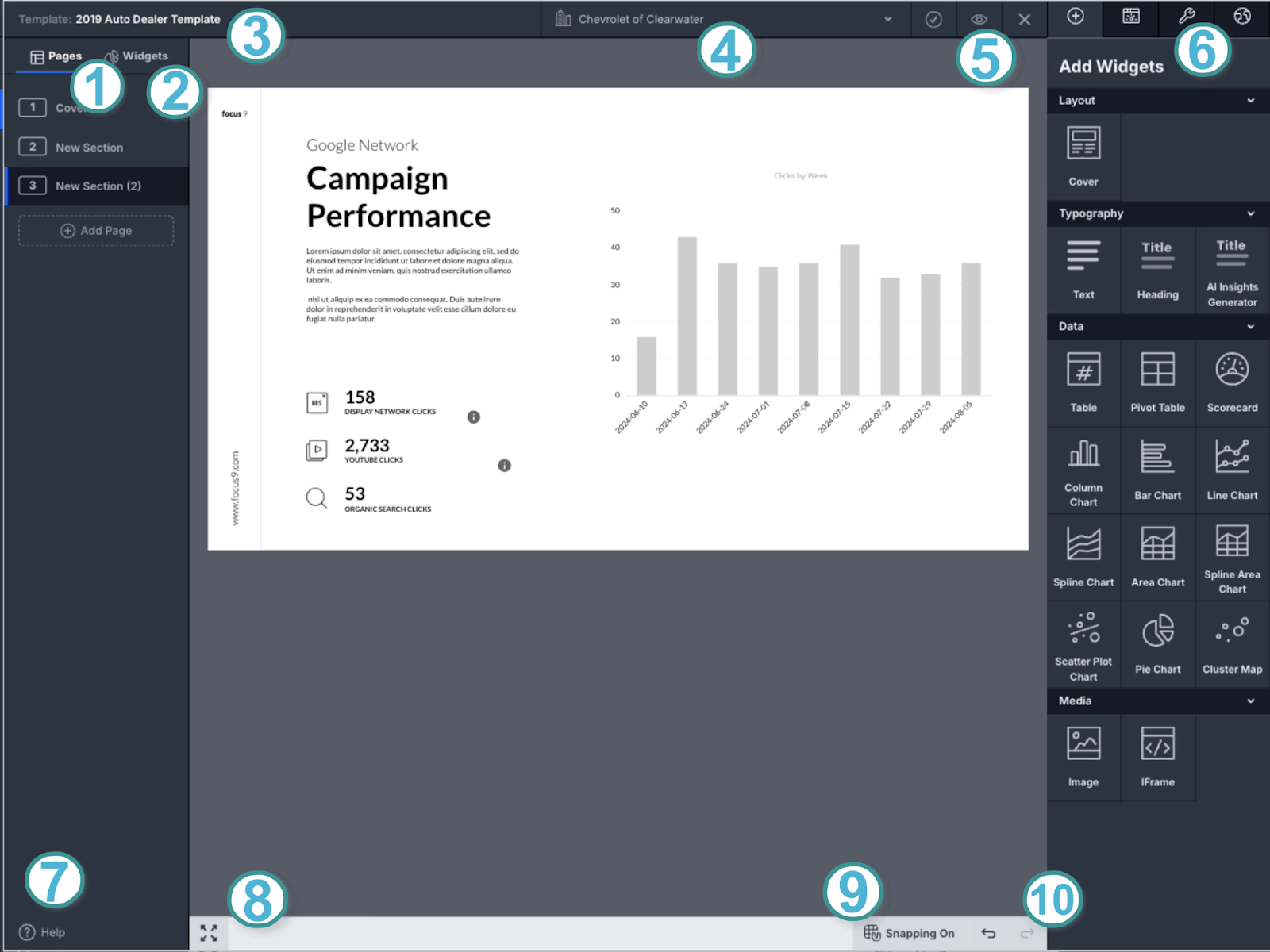 Graphic designers will be familiar with this layout as it looks a lot like a popular design tool—Figma. However, if you’re a marketer without a design background, this can be quite confusing and overwhelming.
Graphic designers will be familiar with this layout as it looks a lot like a popular design tool—Figma. However, if you’re a marketer without a design background, this can be quite confusing and overwhelming.
Key Features
- 100+ pre-built connectors
- No-code transformations and calculations
- Data transfer to BI tools and data warehouses
- Easy ad spend and campaign performance monitoring
- White-label options
- White-glove setup and service
NinjaCat Reviews from Real Users
“I love how it pulls in our data across several different platforms into one cohesive report.” (Source)
“The support the NinjaCat provides is exceptional.” (Source)
“I found a lot of the functionality on Ninjacat to be really clunky, unfortunately things take a LONG time to process if you're adding more than one filter to a table.” (Source)
Pros:
- Automated client reporting
- One platform for integration and visualization
- Multiple choice of destinations
- Custom branded reports
Cons:
- Separate workspaces to organize and visualize data
- Complex visualization builder
- Performance issues with reports
- No autosave in case of a crash
Pricing
NinjaCat doesn’t offer fixed pricing plans, and no information is available on its website.
12. Funnel.io
Most suitable for: Enterprises with dedicated data scientist teams
If you’re looking for a data pipeline tool, Funnel is a great choice. It pulls data from different sources, transforms it, and ships it to data warehouses, visualization tools, or spreadsheets.
Funnel boasts over 500 data connectors with major marketing platforms and CRM systems, such as Hubspot, Salesforce, DV360, and more.
If you don’t see a connector, you can also import your own data using a Google sheet, or request the Funnel team to build one for you.
Funnel does offer a basic visualization dashboard to visualize your key metrics, but there aren’t a lot of customization or white-labeling options available (the company admits that it’s not a “Tableau or Looker Studio killer” yet).
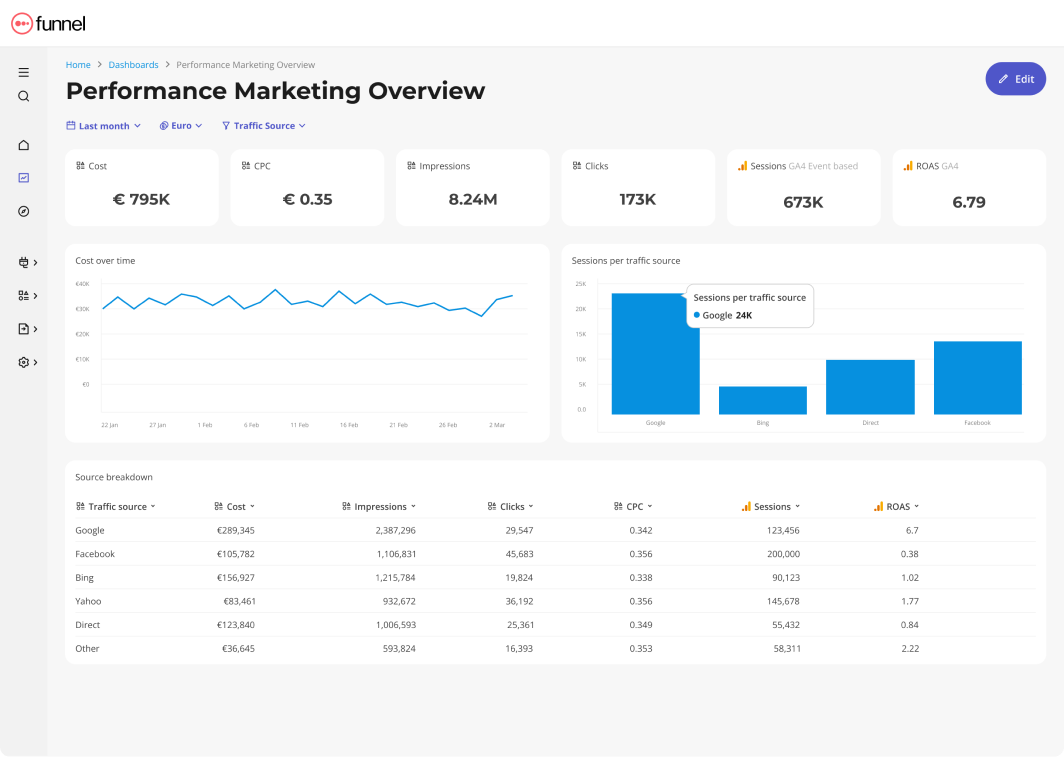 One powerful feature of Funnel is their Marketing Measurement. This lets you find channels and campaigns that drive results easily so you can optimize your media mix with more confidence.
One powerful feature of Funnel is their Marketing Measurement. This lets you find channels and campaigns that drive results easily so you can optimize your media mix with more confidence.
With it, you’ll get AI recommendations on where to increase and decrease spend based on marginal CPA and ROAS to increase budget efficiency. You can also create “what-if” scenarios with just a few clicks to investigate the impact of budget changes for any channel.
However, Funnel is difficult to use and much more expensive than TapClicks.
Key Features
- 500+ integrations
- Custom integrations or Google Sheets data import
- Custom dimensions, metrics, and currency conversions
- “Data Explorer” dashboard for data scientists
- Basic visualization dashboards to view key metrics
- Export to data destinations
Funnel Reviews from Real Users
“Funnel does the work of several people, we now couldn't run our business without it.” (Source)
“What I like most about Funnel is how customizable it is. Within their Data Explorer you can look at the data in any way please and any possible configuration.” (Source)
“Takes some time to wrap your head around, and the set up takes some time. Still some bugs in some connectors that haven't been solved after a few months.” (Source)
Pros and Cons
Pros:
- A wide range of connections with all major marketing platforms
- Low-code data organization interface
- Fast and helpful customer support team
Cons:
- Initial steep learning curve
- Occasional bugs in connectors
- Basic native visualization widgets
Pricing
Funnel.io’s pricing model is based on “flexpoints” which are usage credits to add new data connectors, transform data, and move it to destinations.
It offers three distinct pricing plans: Starter, Business, and Enterprise.
- Starter: $1.2 / flexpoint per month. This plan allows you to connect the first 3-5 sources and use 350 flexpoints* for free. It includes 121 core integrations, 3 Core destinations, and the Data Explorer.
- Business: $1.5 / flexpoint per month. Gives you everything in Starter plus 381 additional Business connectors, 37 Business destinations, data source templates, and unlimited workspaces.
- Enterprise: $2.0 / flexpoint per month. The plan designed for organizations operating at scale includes everything in Business plus 11 Enterprise connectors, 1 additional Enterprise destination (Snowflake), data region choice, and technical account management.
But if you need dozens of data sources and destinations, you can expect to pay anywhere between $1500 to $4000 per month.
13. Supermetrics
Most suitable for: Enterprises with dedicated data scientist teams
Similar to Funnel, Supermetrics is a data moving tool that pulls together marketing data from over 150 platforms, like Google Analytics and Facebook Ads, into data warehouses and BI tools like Big Query and Looker Studio.
With automated normalization, Supermetrics reduces data redundancies and inconsistencies, making sure your data is clean. Supermetrics also offer “Custom Fields” which let you define how your data appears, whether you’re enriching existing metrics or creating new ones.
You can also combine data from various marketing platforms to get a unified view of your performance.
However, the drawback is that you’ll need to have a dedicated data scientist or a technical background yourself to use data mapping and transformations.
In contrast, on Whatagraph, you can blend data, create custom metrics and dimensions, and organize your scattered data, in seconds using simple workflows.
But while Funnel has a basic dashboard for internal data review, Supermetrics depends entirely on BI tools like Looker Studio to visualize your data.
While this may be convenient for marketers who’re already used to working with Google’s reporting tool, it brings all the limitations of Looker Studio, which become evident when you try to scale the volume of data and number of sources.
The data organization features in Supermetrics are pretty basic and reserved for the highest plan only. Marketing teams that use this platform need IT expertise or data analysts to execute data mapping and transformation.
Key Features:
- 150+ integrations
- Data transfers to business intelligence tools, spreadsheets, and data warehouses
- Native data storage layer called “Supermetrics Storage”
- Automated normalization, custom fields, data blending, and data enrichment rules
- Ad budget tracking
- Real-time and retroactive reporting
- User, role, and access management
Supermetrics Reviews from Real Users
“Thanks to Supermetrics we were able to create a single dashboard for all our channels and now we can compare cost, clicks, impressions, conversions across all our channels.” (Source)
“I find the steeper learning curve associated with Supermetrics to be a bit challenging. “ (Source)
“Loading time for large amounts of data can take some time. I feel like that is more of a Looker issue than a Supermetrics issue mostly.” (Source)
Pros and Cons
Pros:
- Simple and easy to use
- Automated no-code data transfers
- Easy historical data retrieval
- Great for extracting data to BI or ML platforms
Cons:
- Loading data to multiple destinations is not available with a single pricing plan
- Adding more data sources requires buying more connectors
- Looker Studio connector can get slow when connected to multiple ad accounts
Supermetrics Pricing
Supermetrics offers pricing plans based on the final destination and the number of data sources you want to connect. However, for most plans, you must contact their sales to get quotes.

WRITTEN BY
YamonYamon is a Senior Content Marketing Manager at Whatagraph. Previously a Head of Content at a marketing agency, she has led content programs for 5+ B2B SaaS companies in the span of three years. With an eye for detail and a knack for always considering context, audience, and business goals to guide the narrative, she's on a mission to create genuinely helpful content for marketers. When she’s not working, she’s hiking, meditating, or practicing yoga.